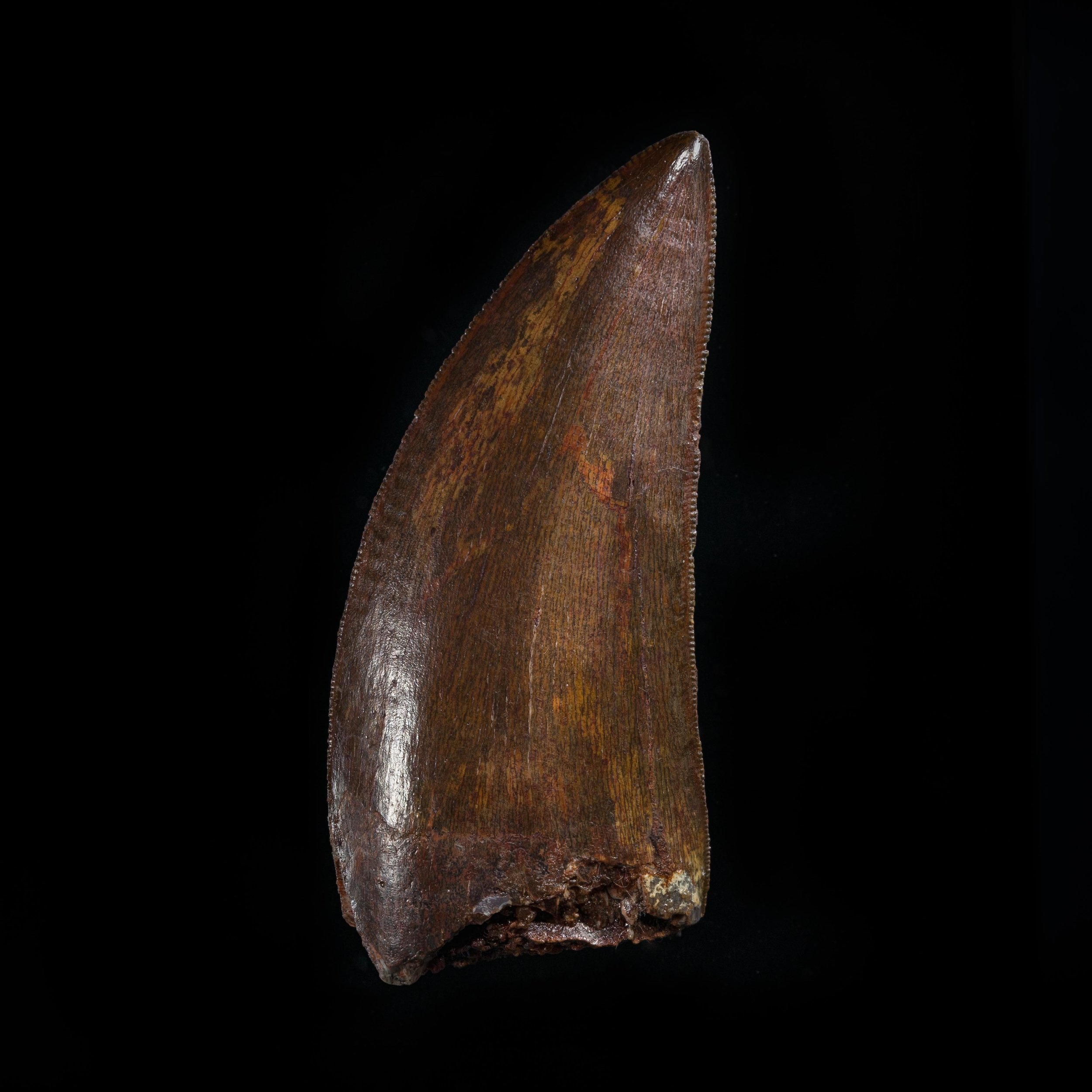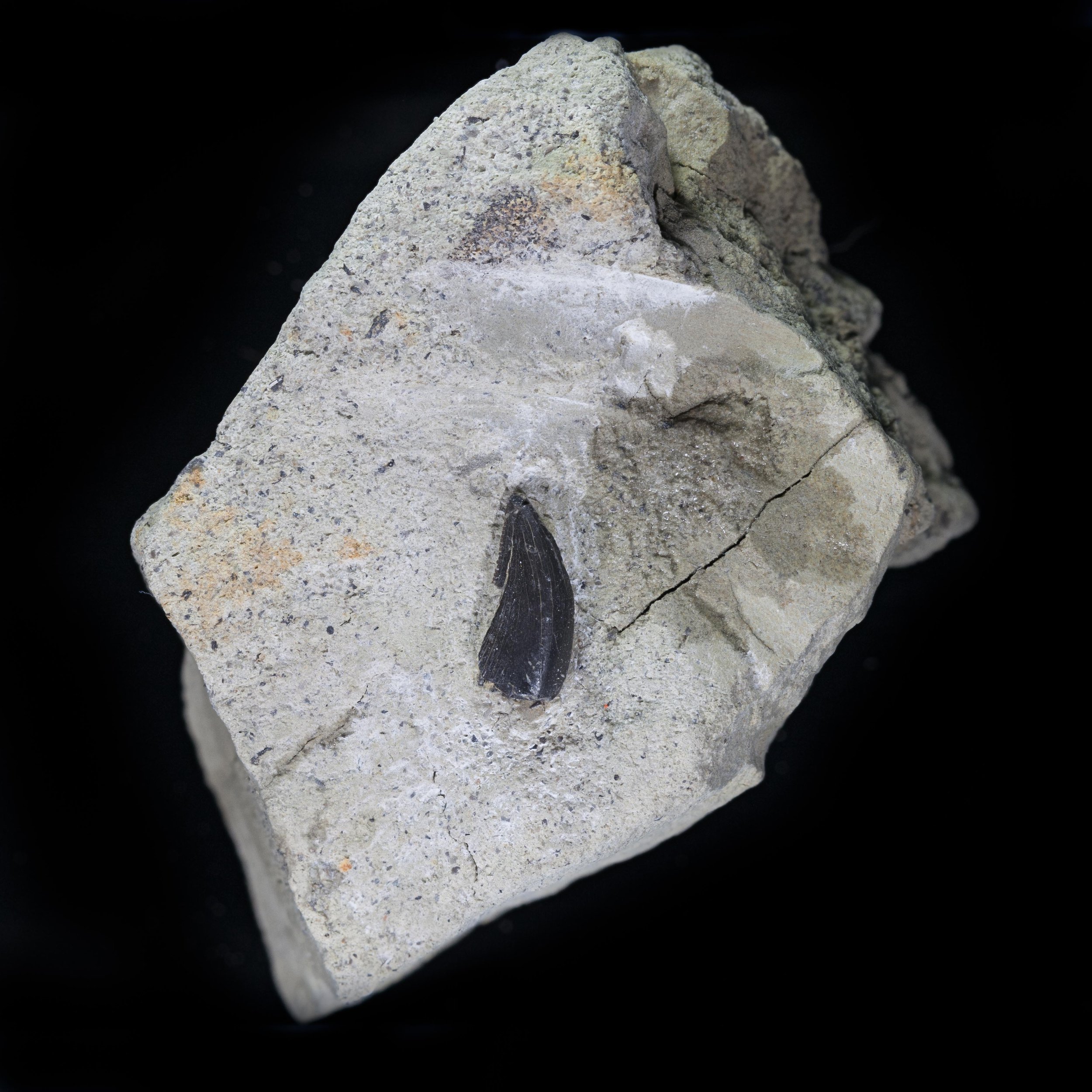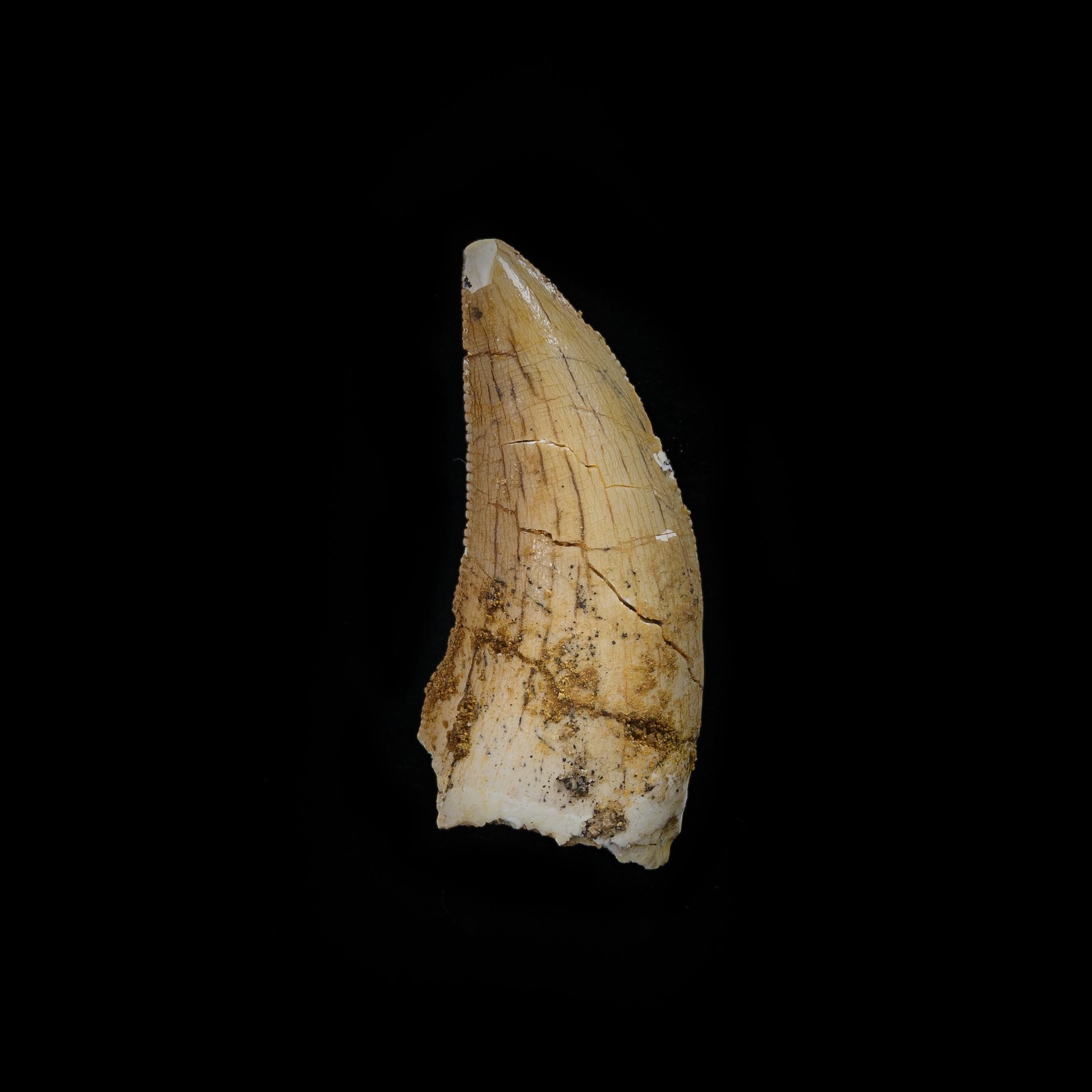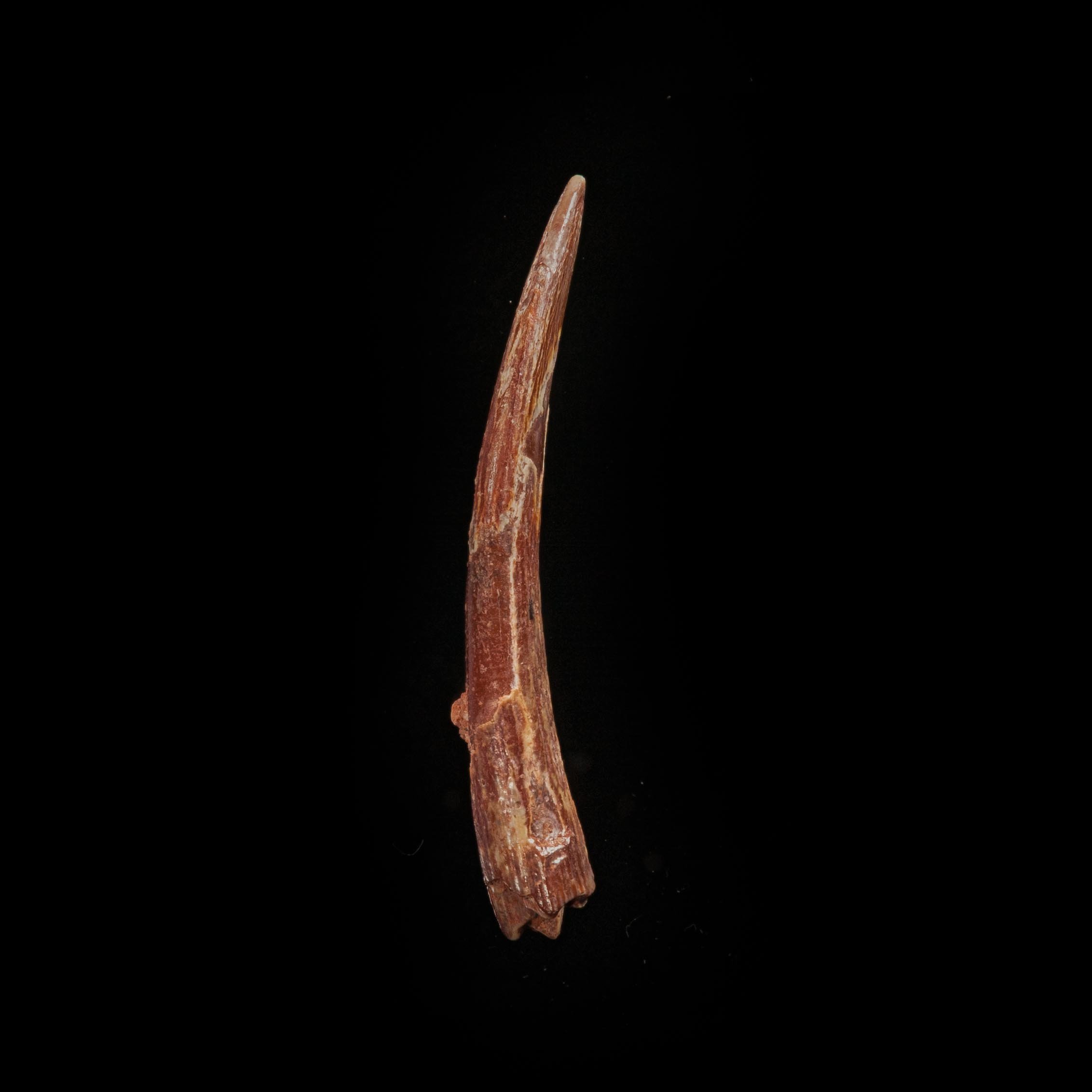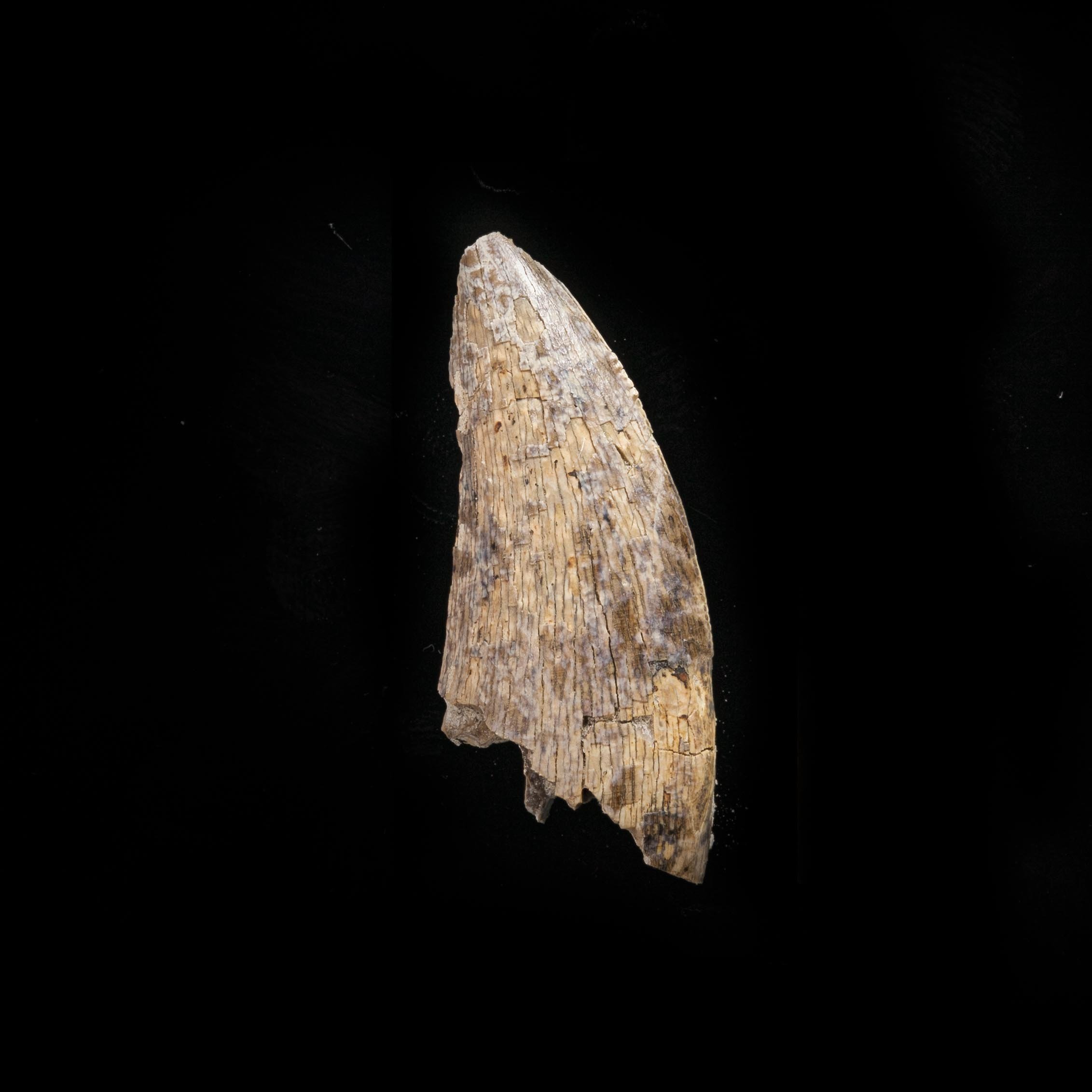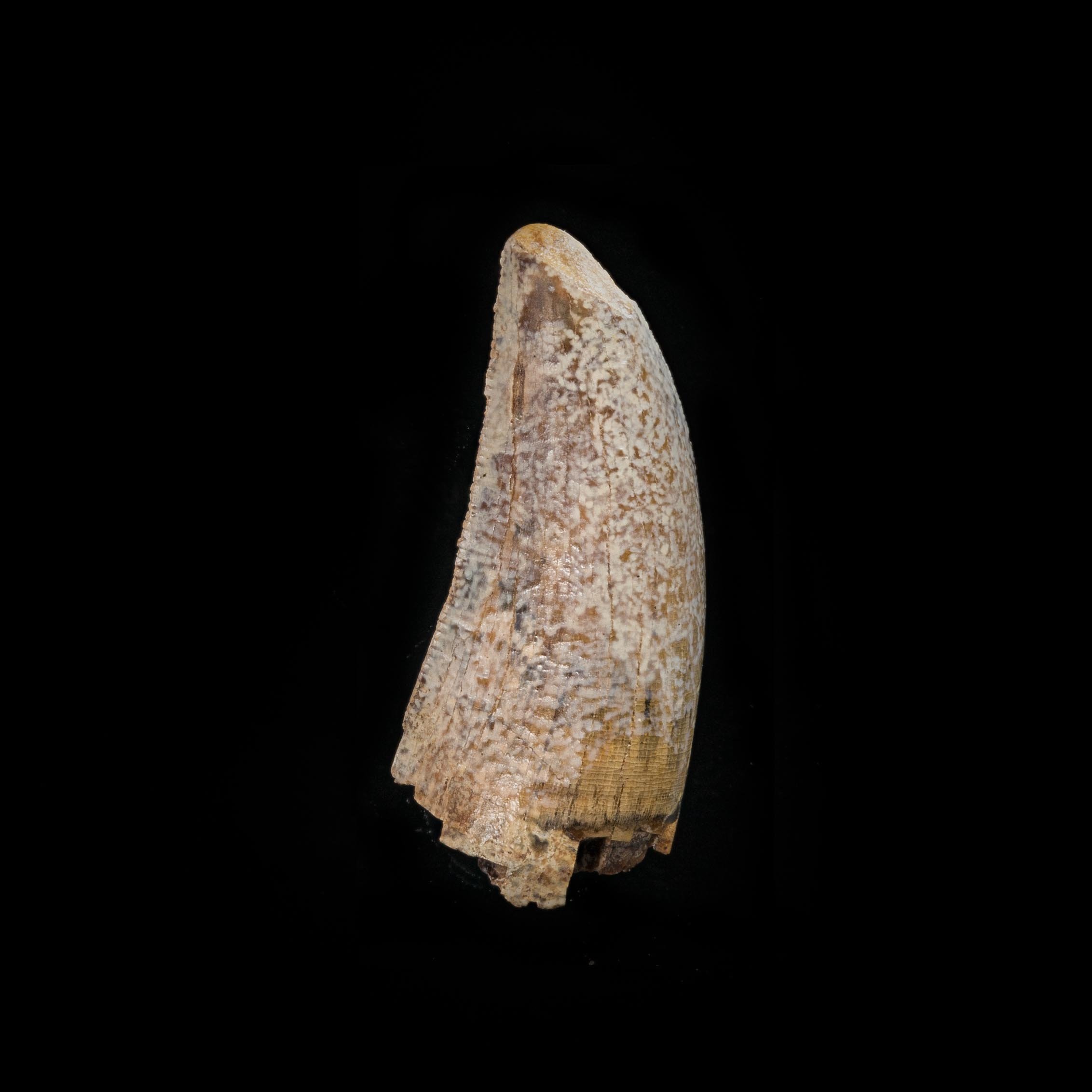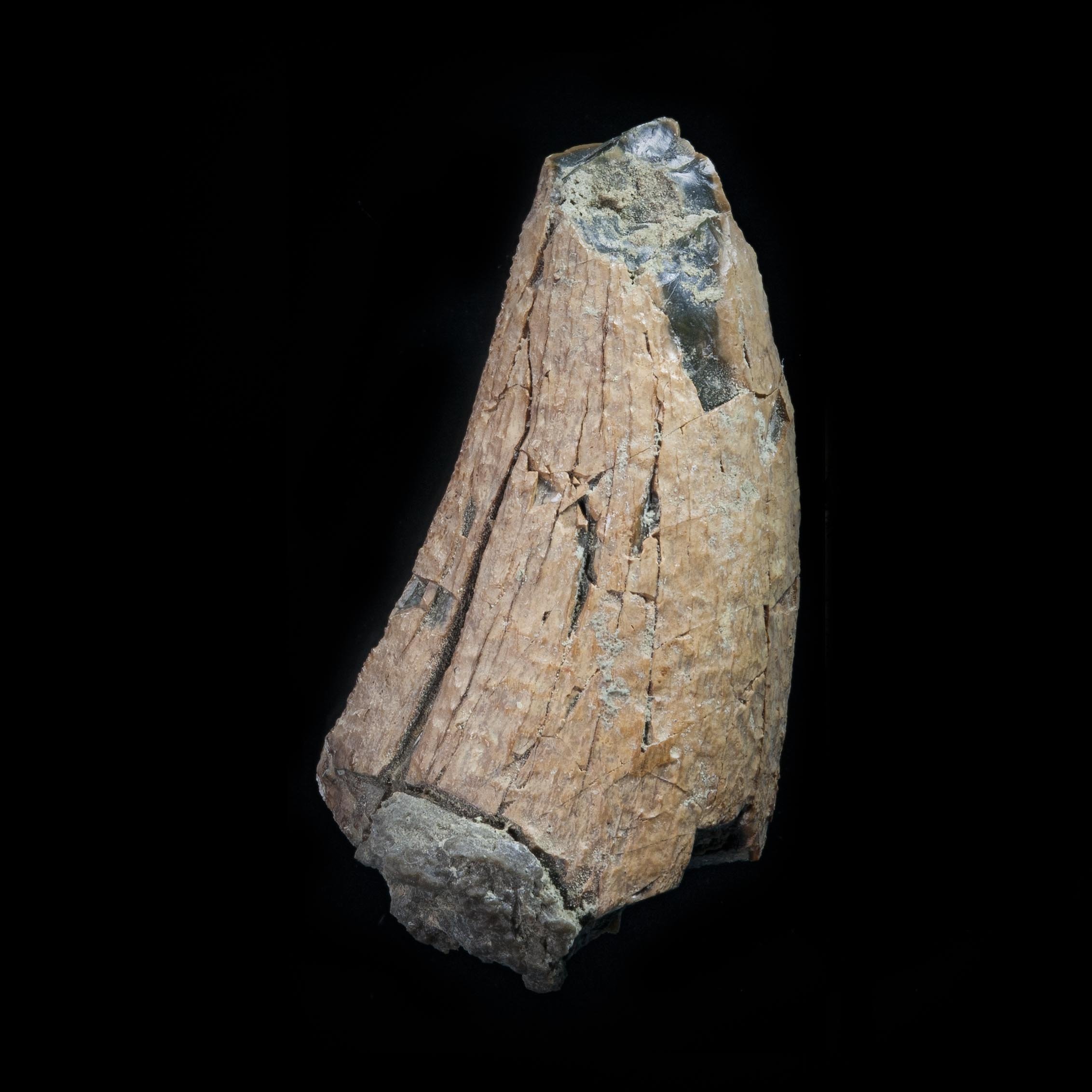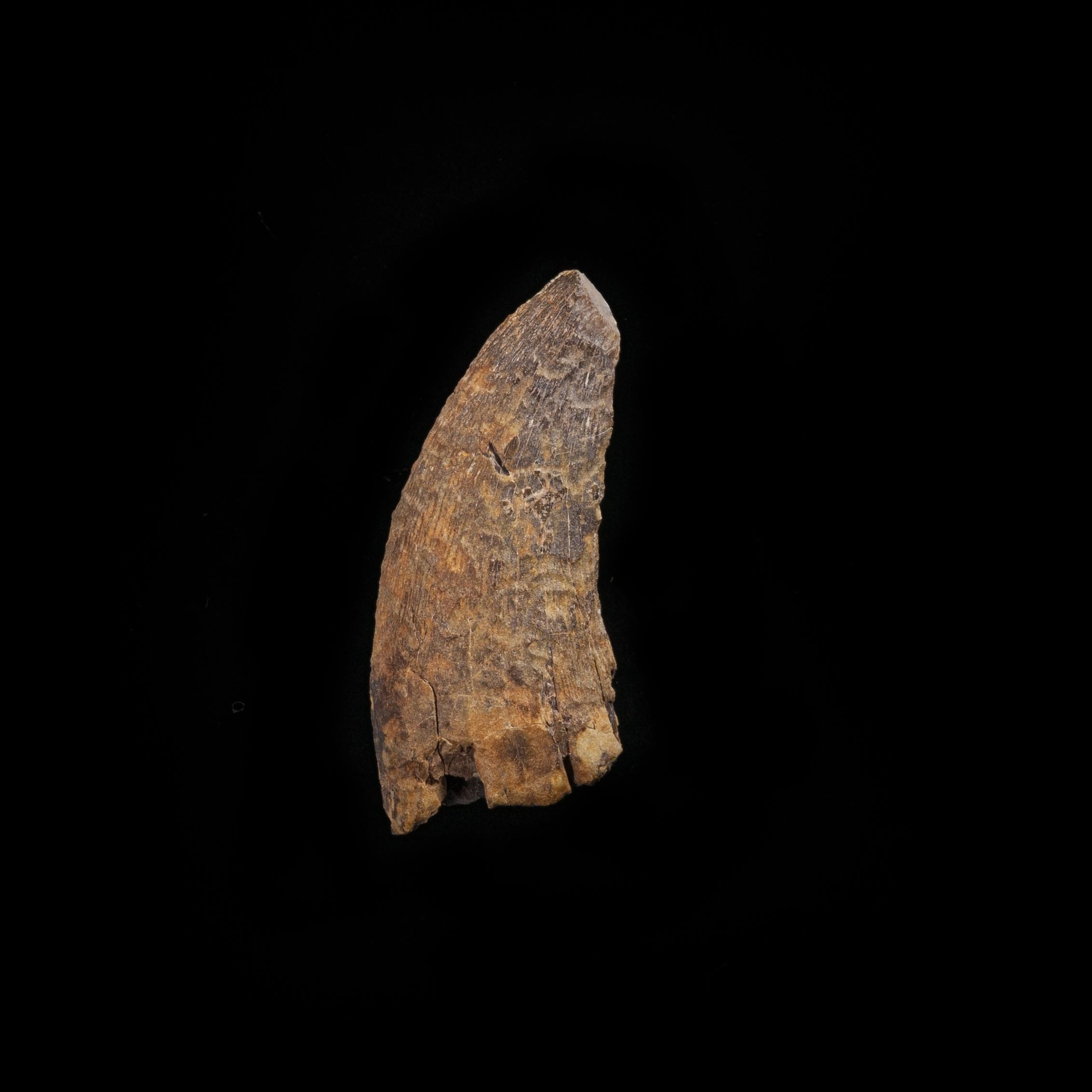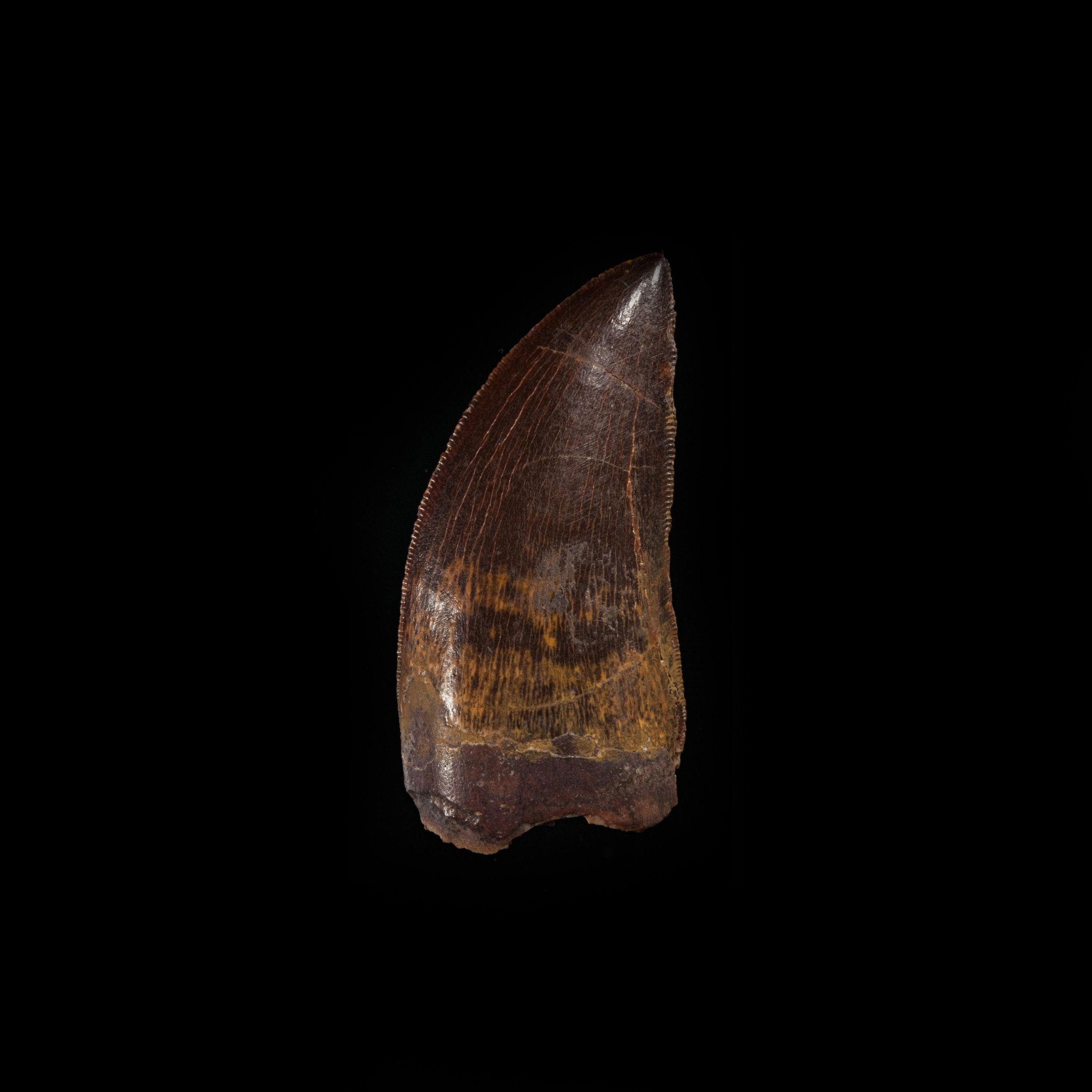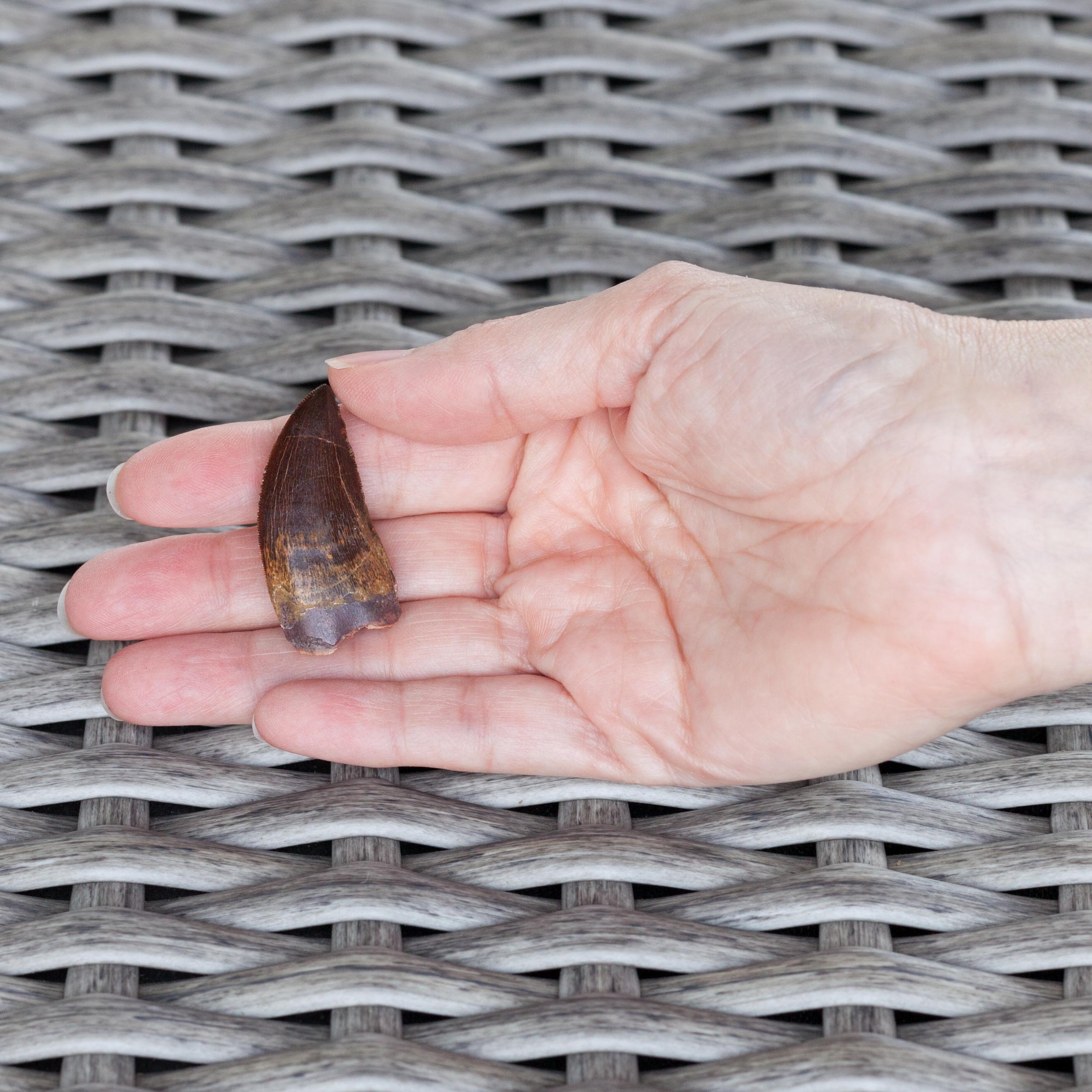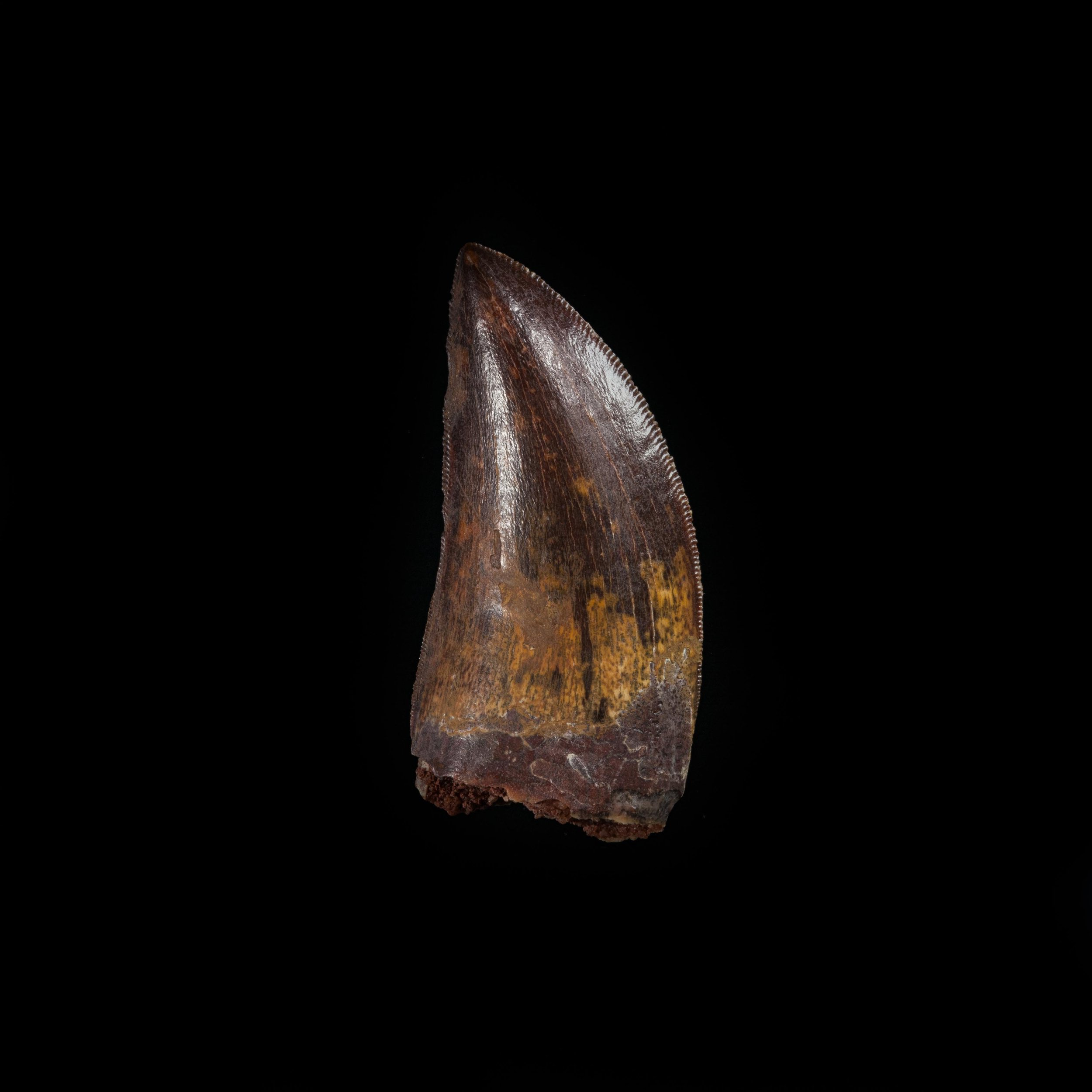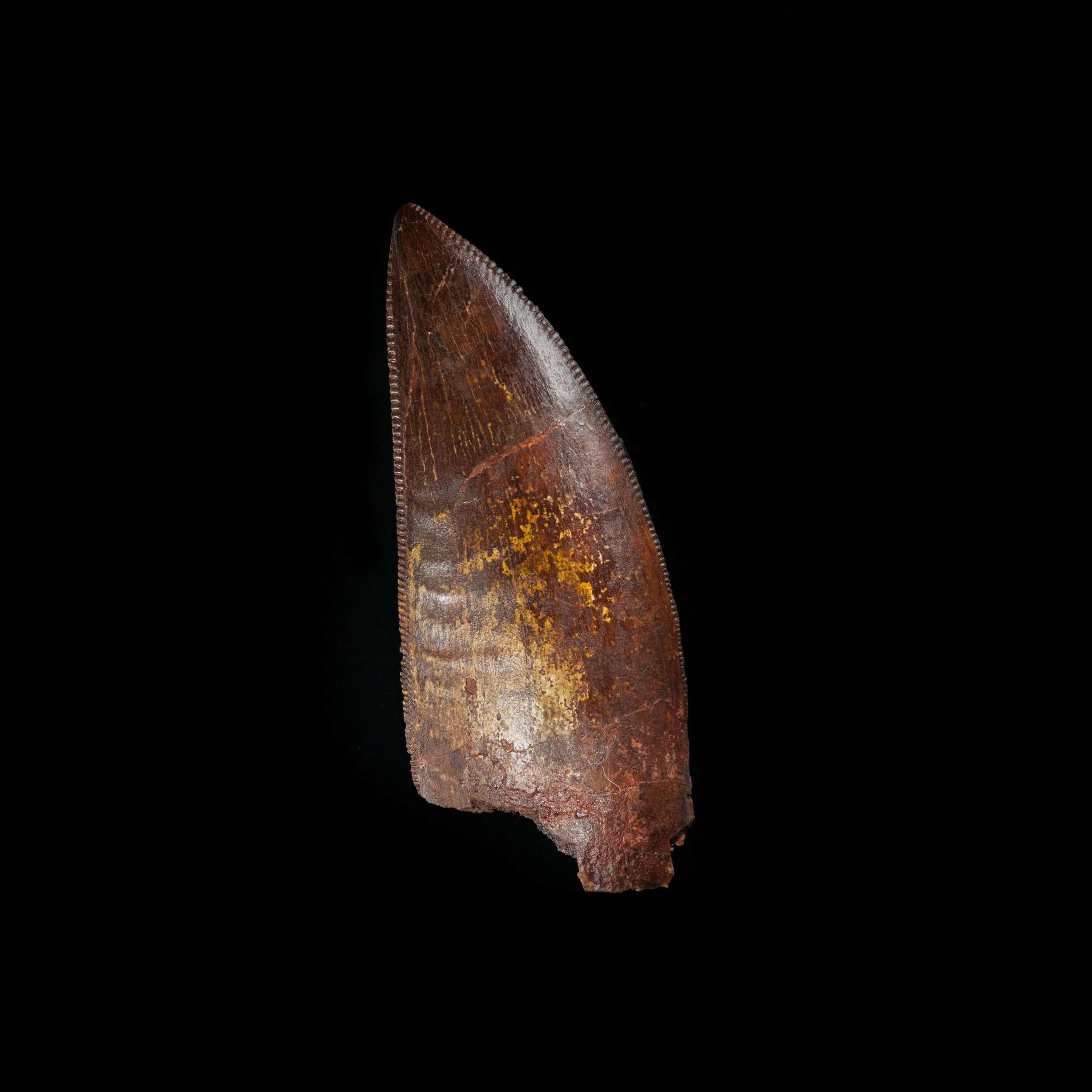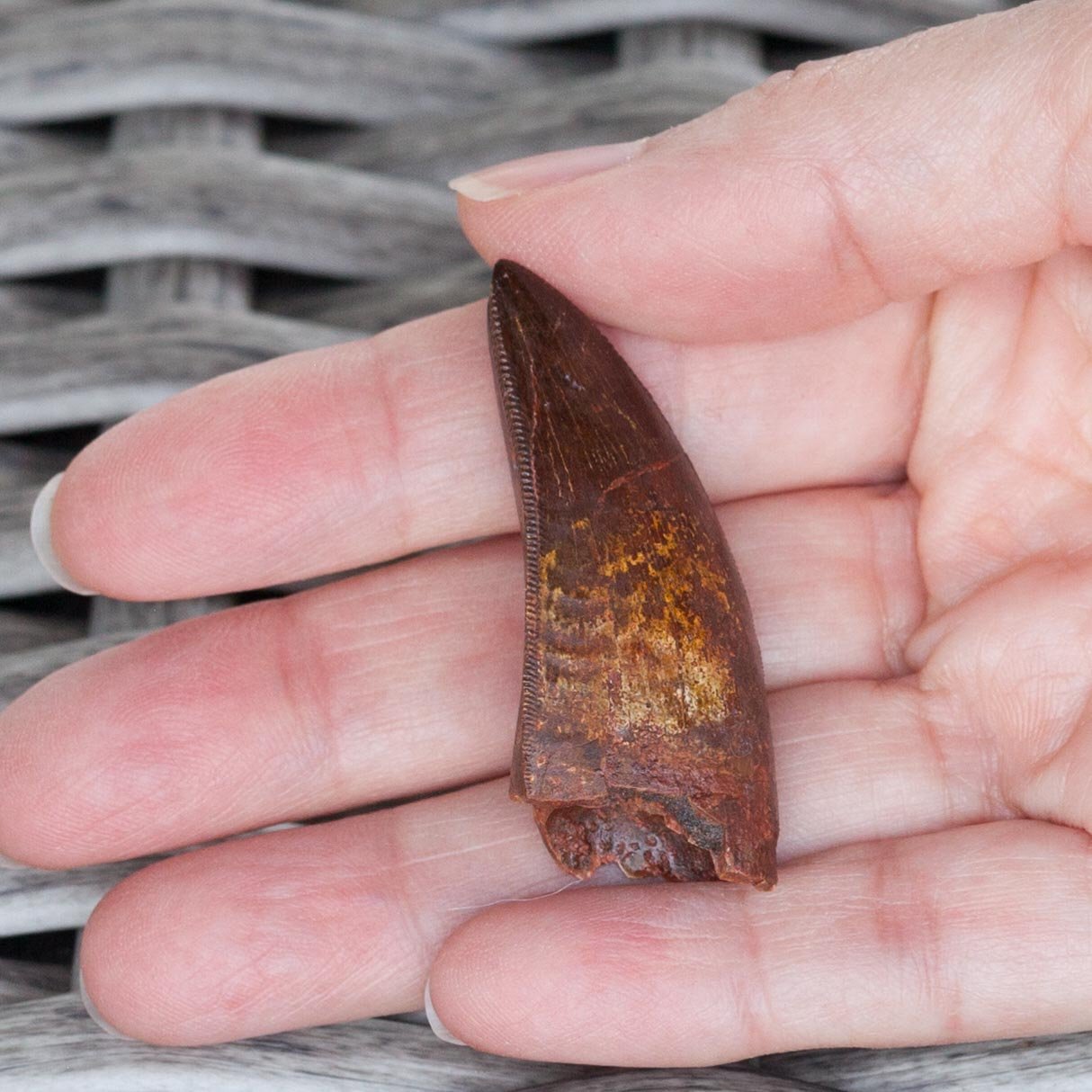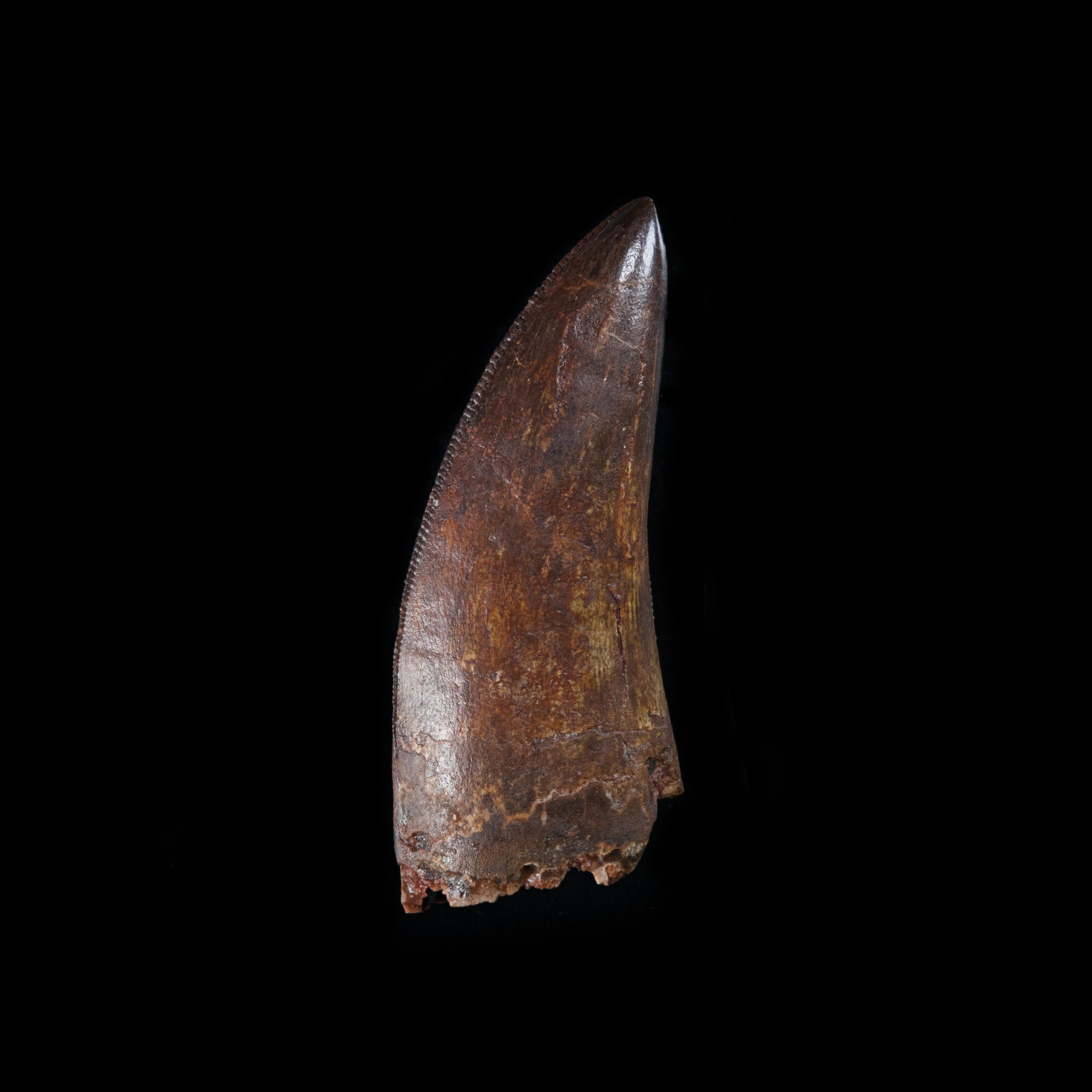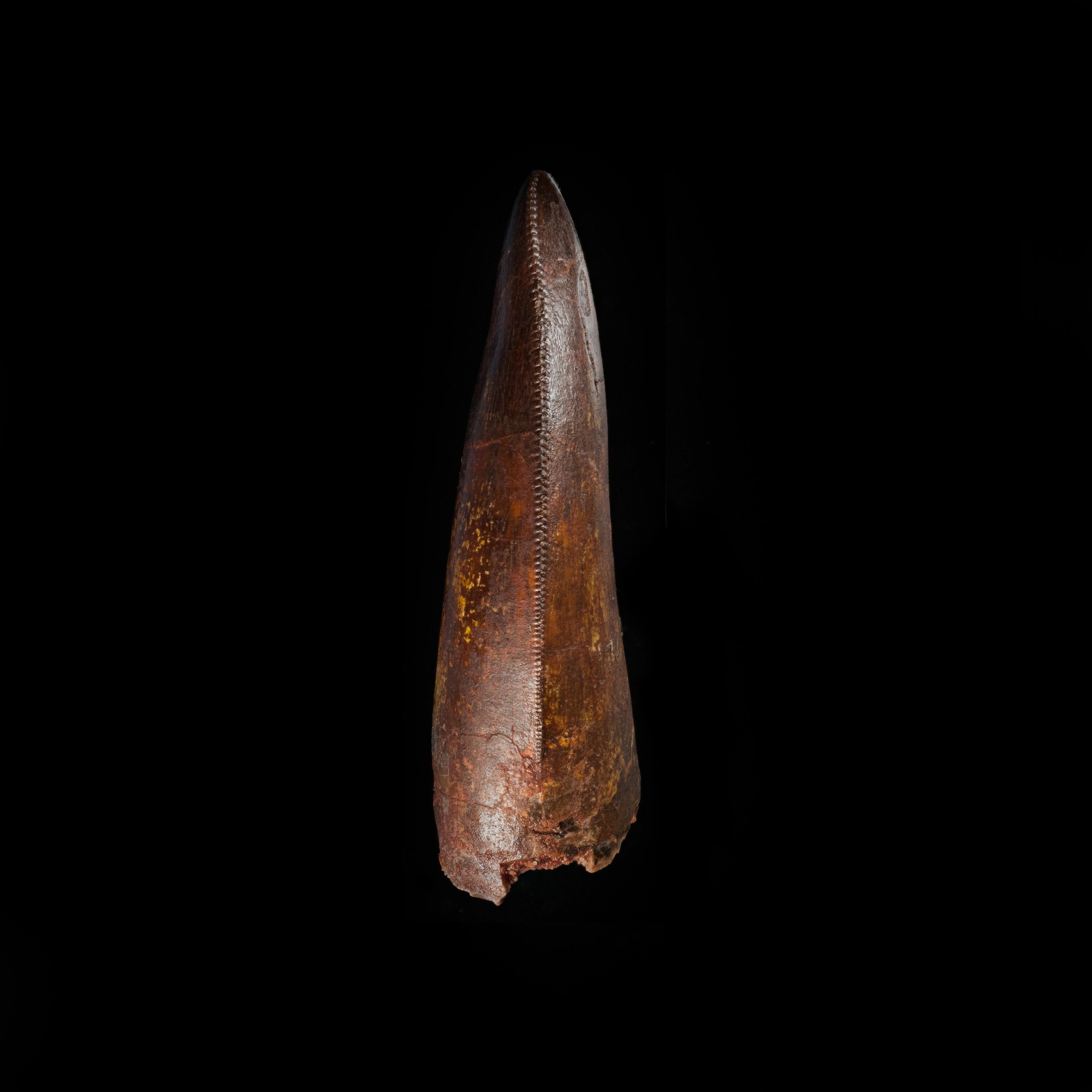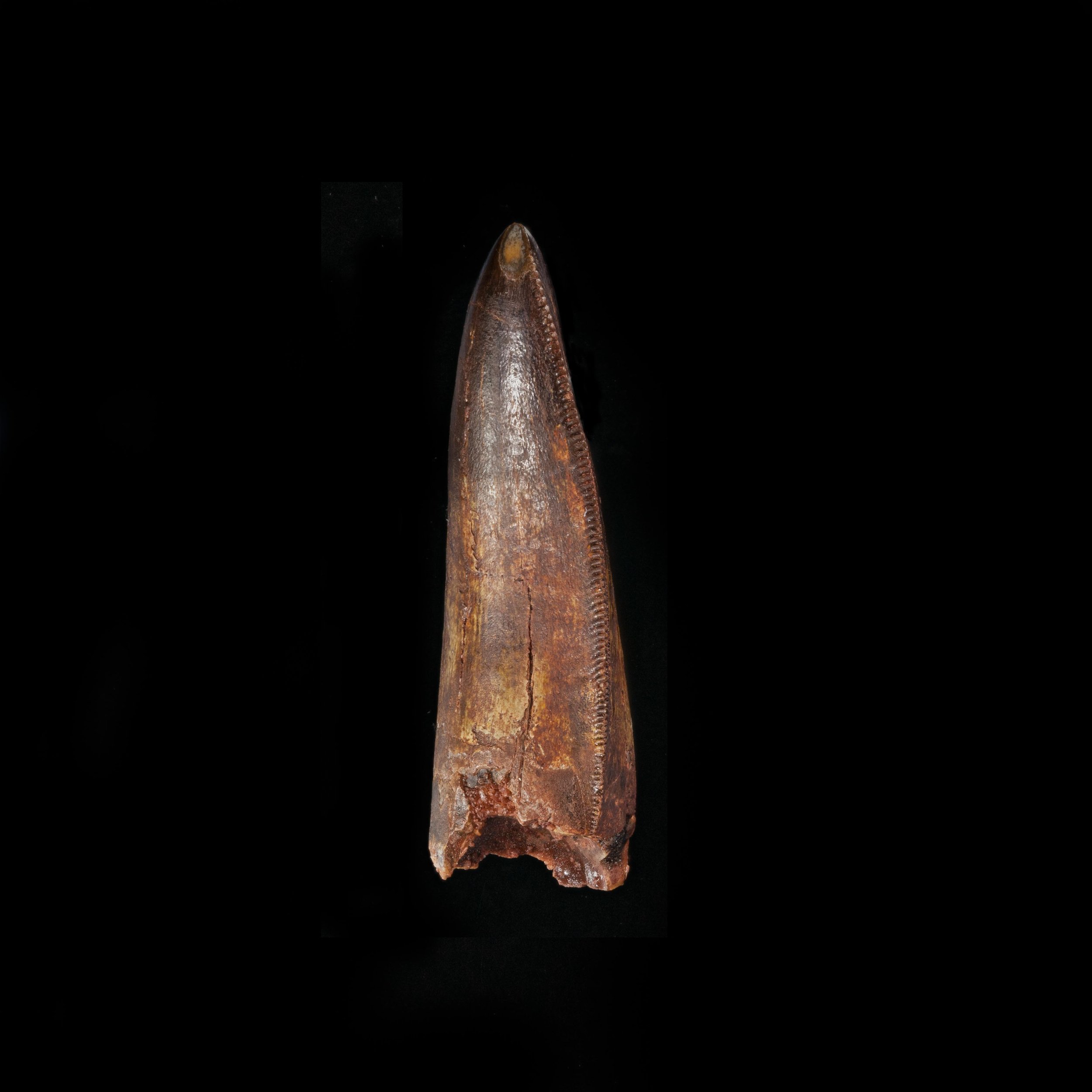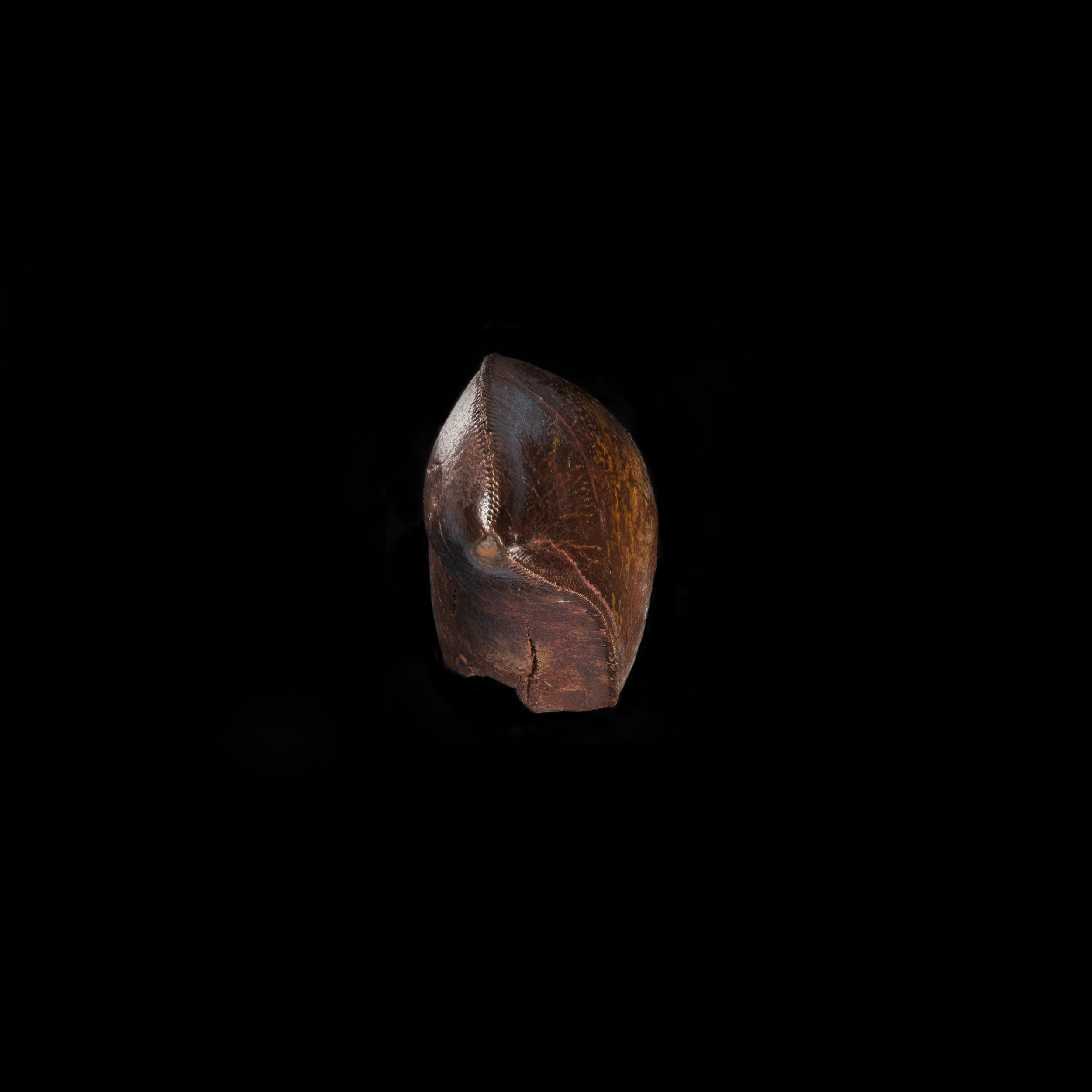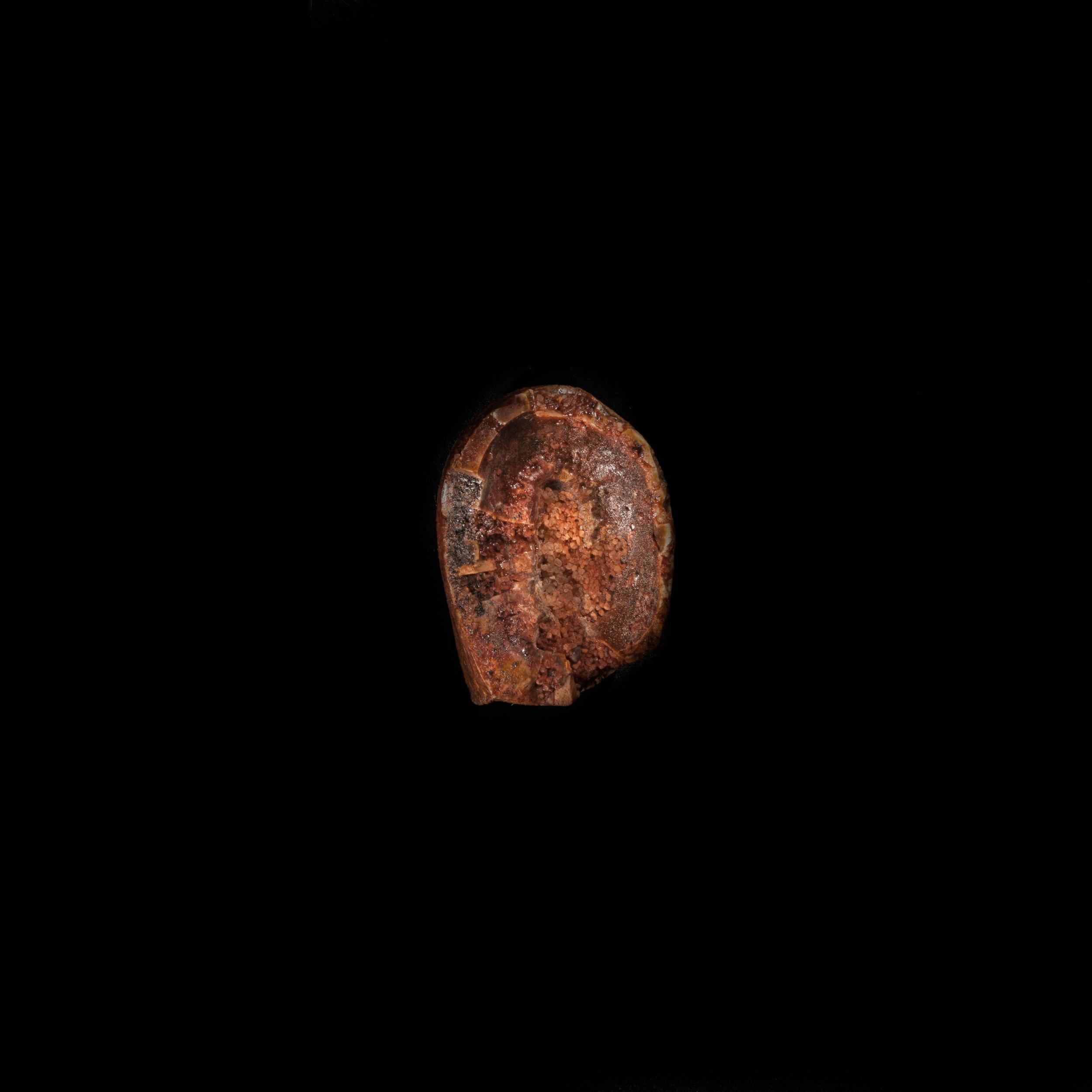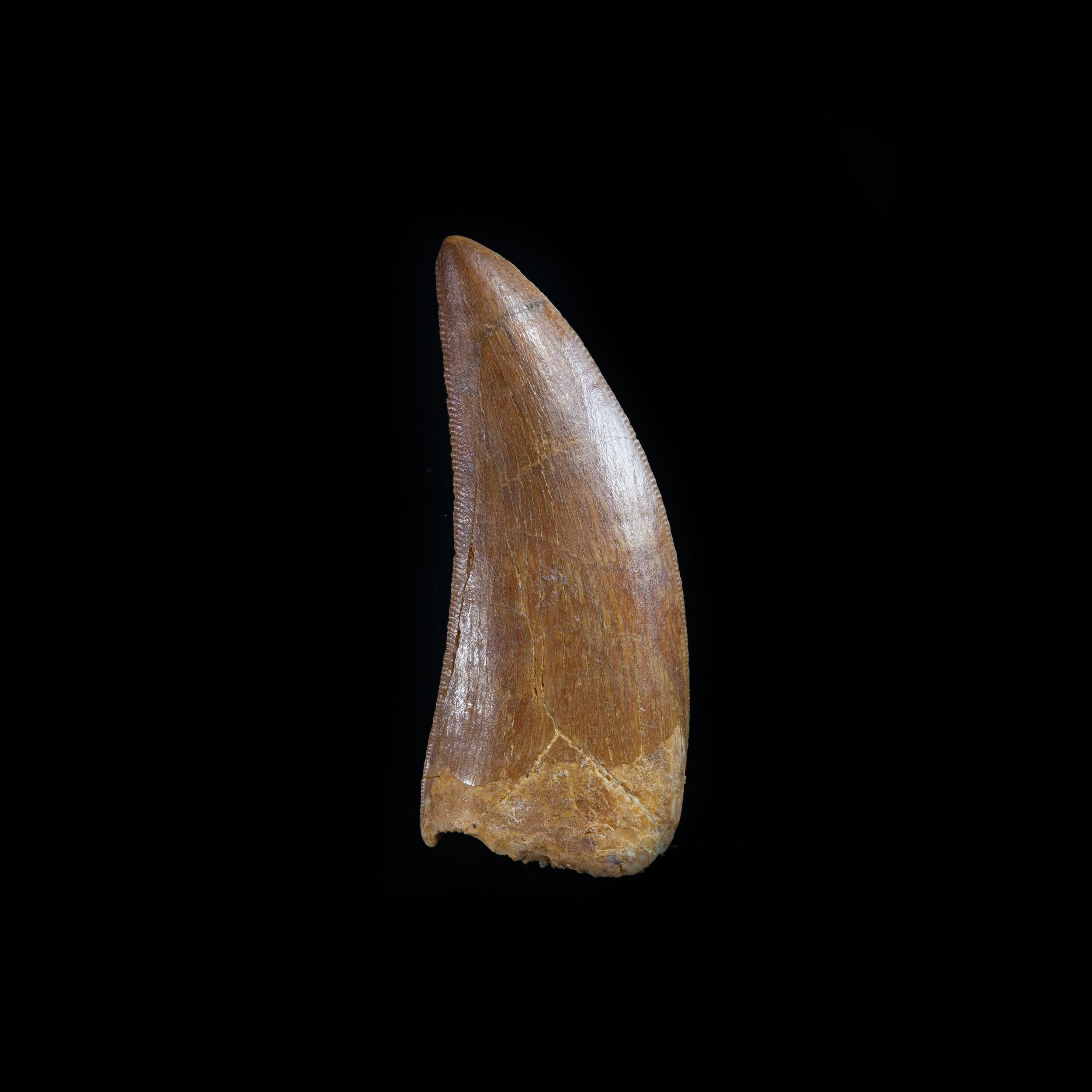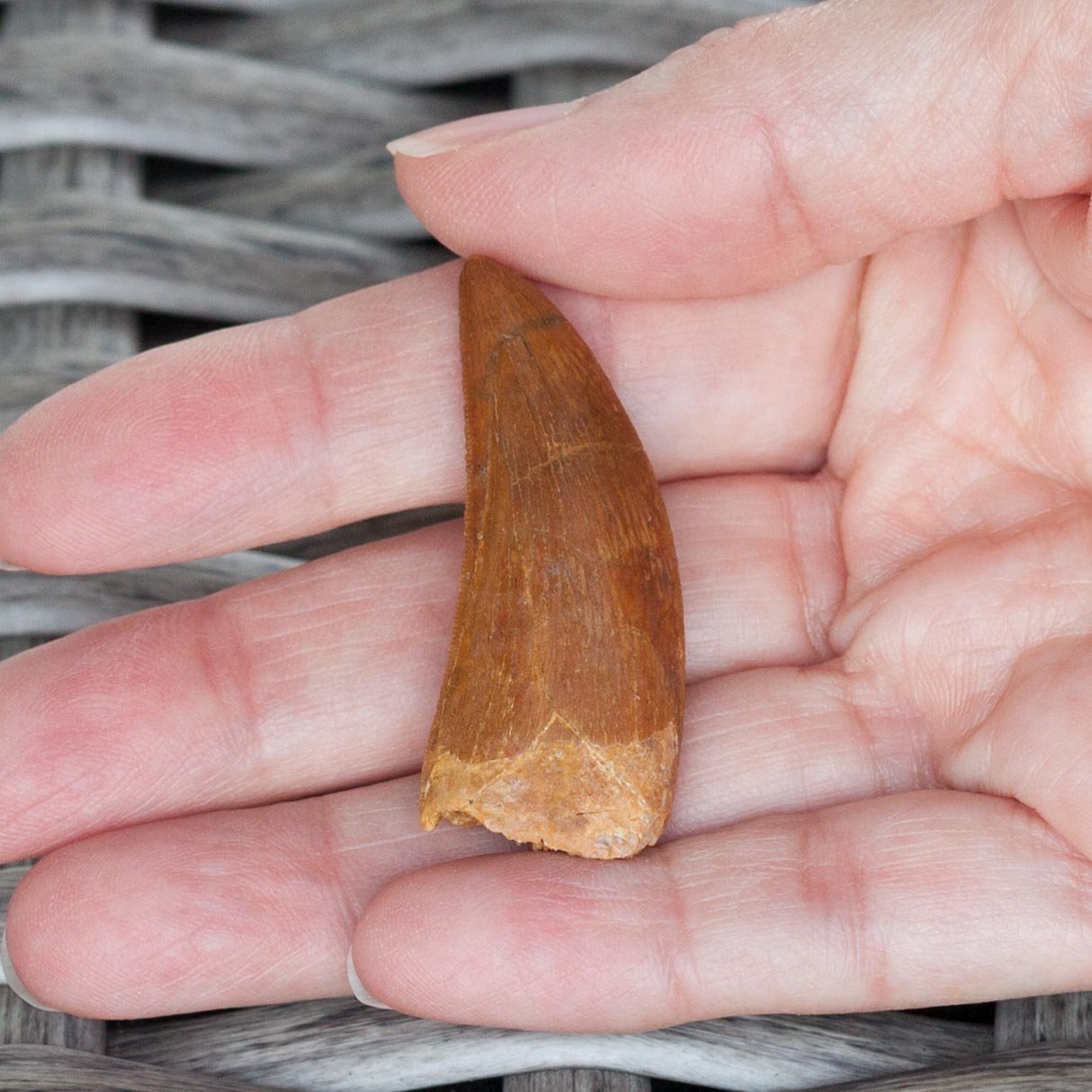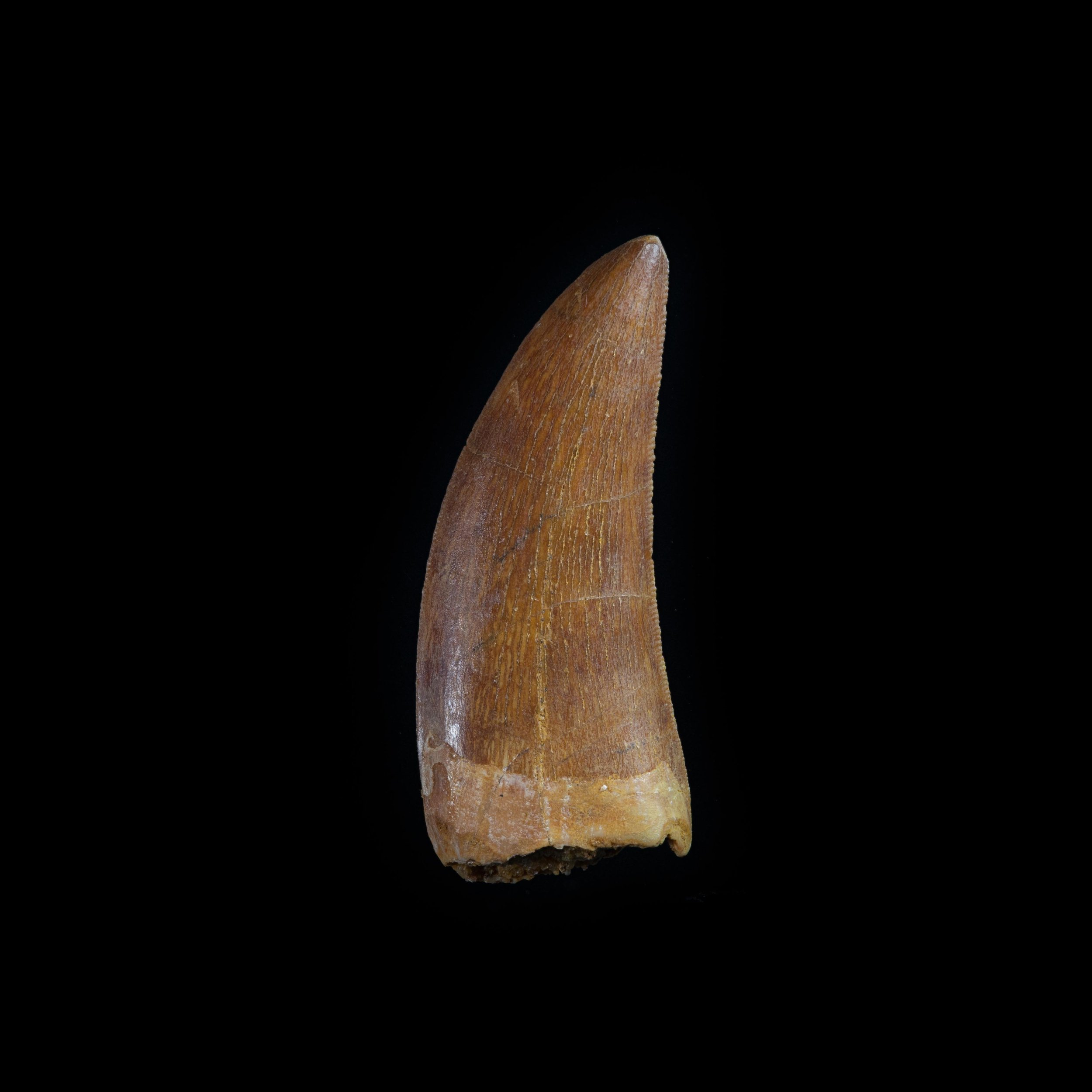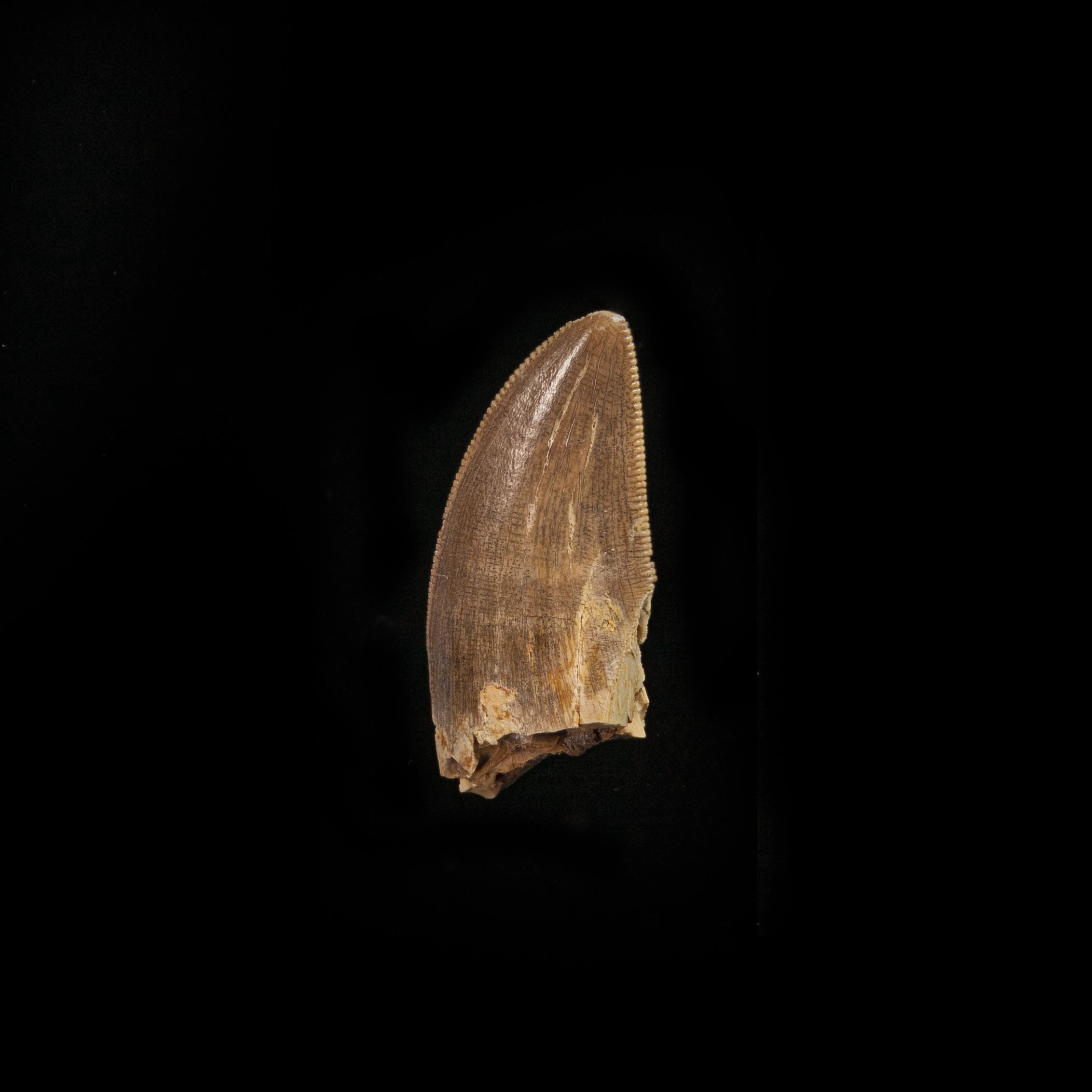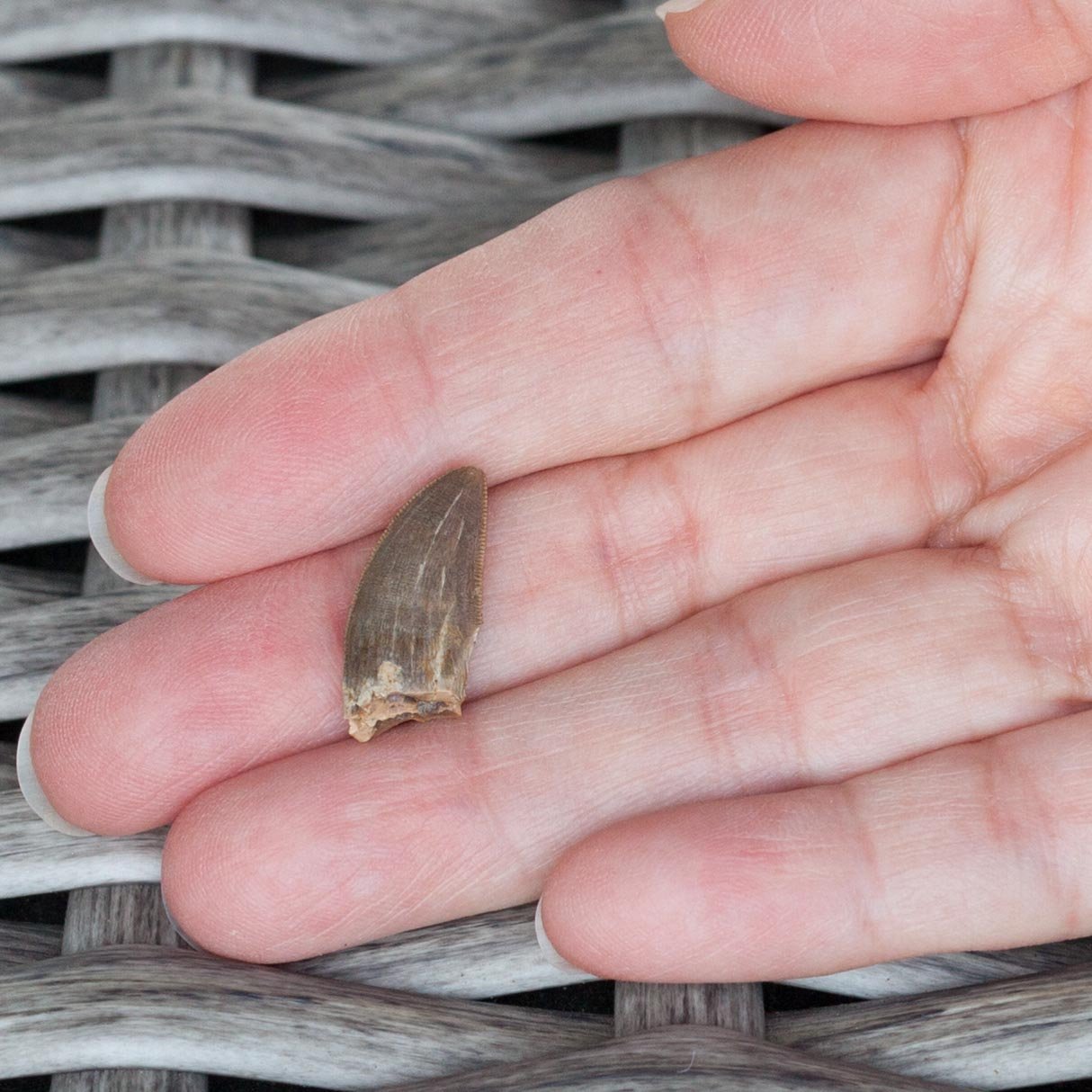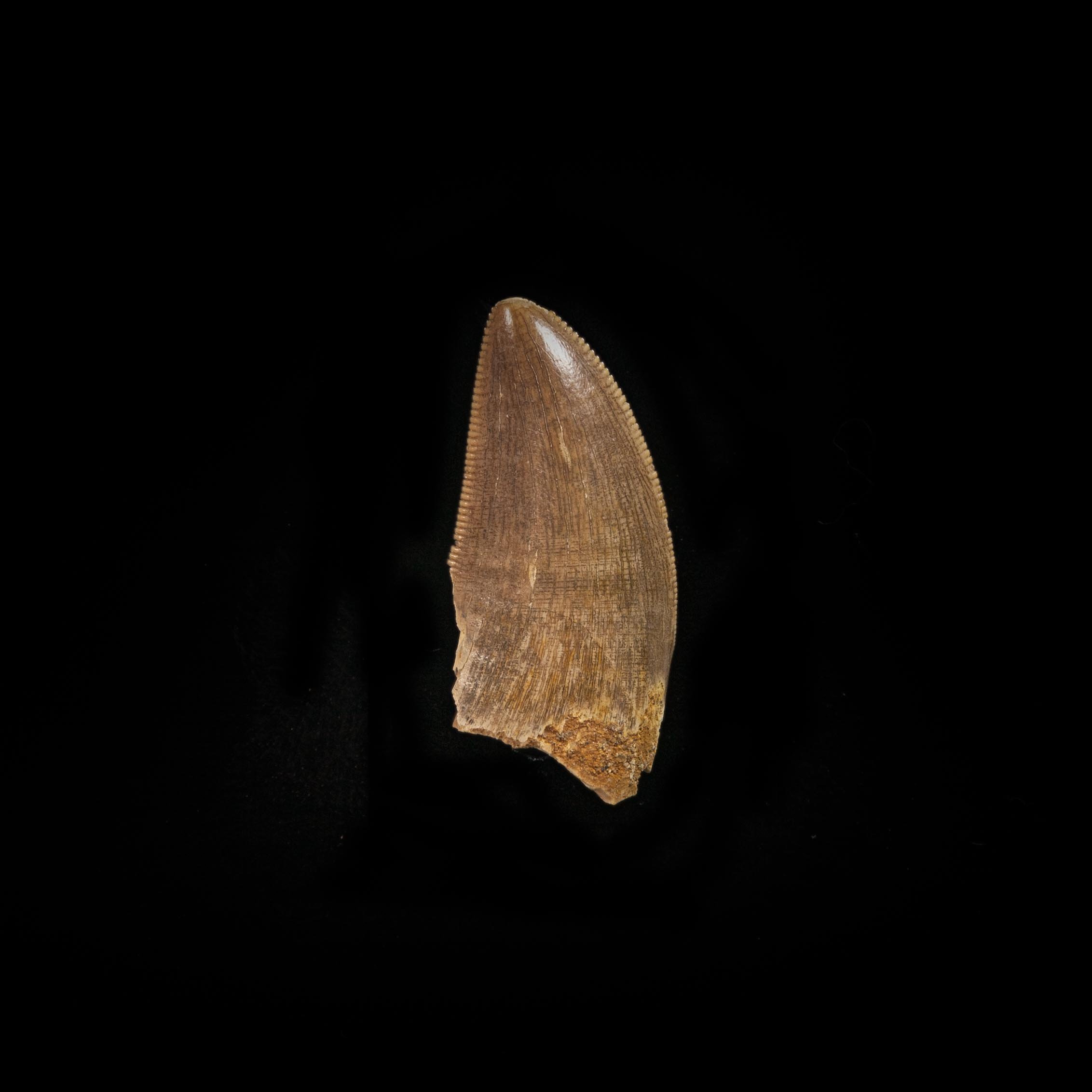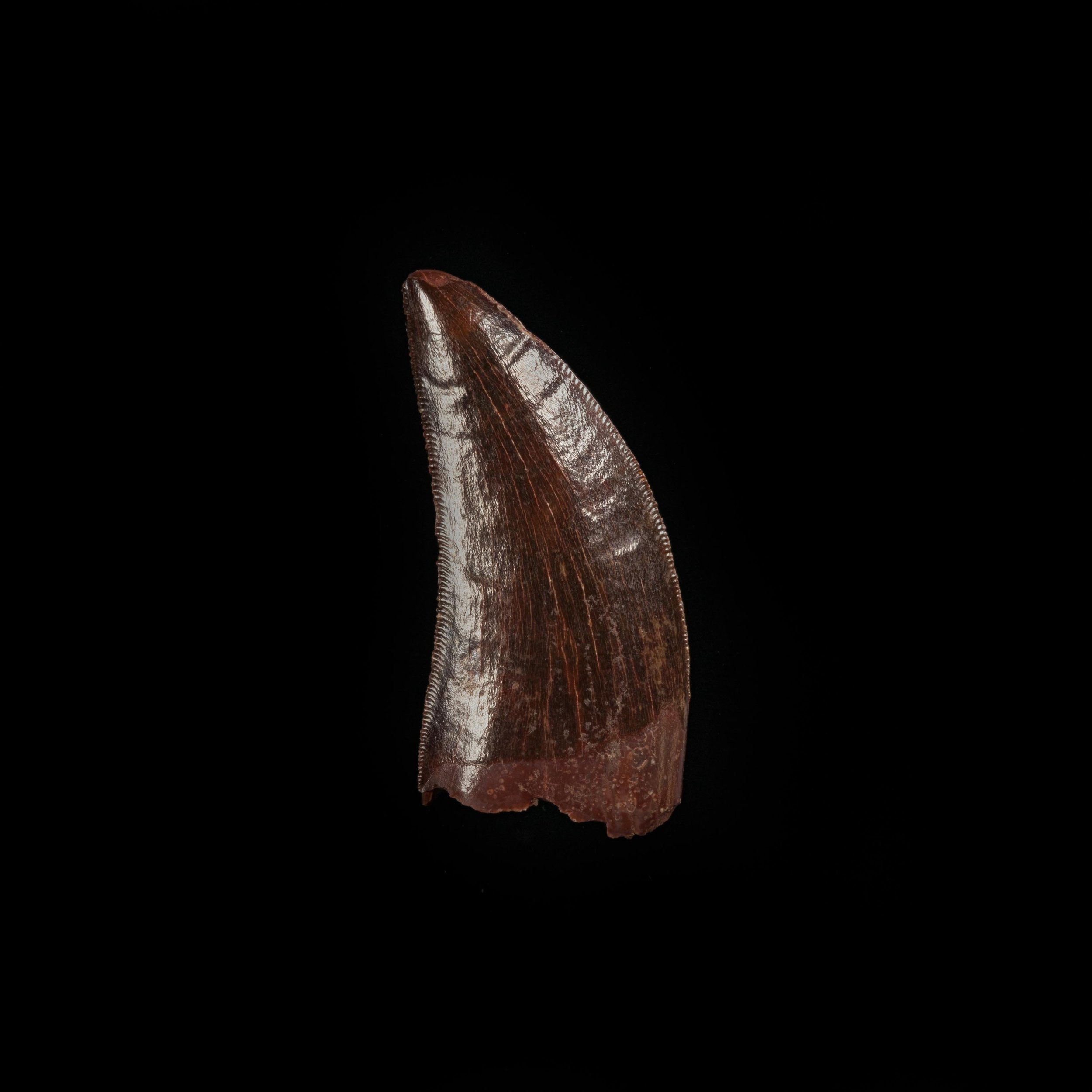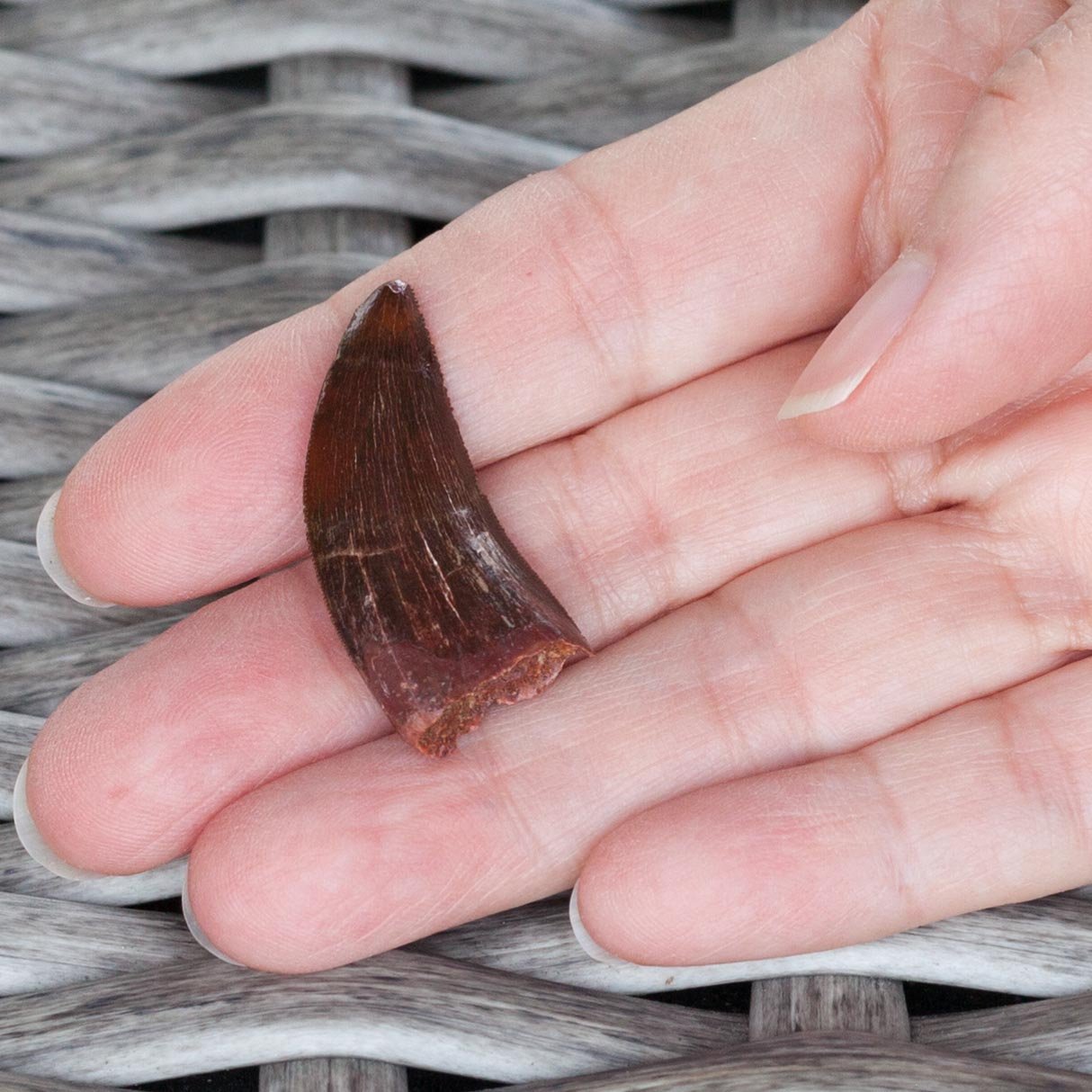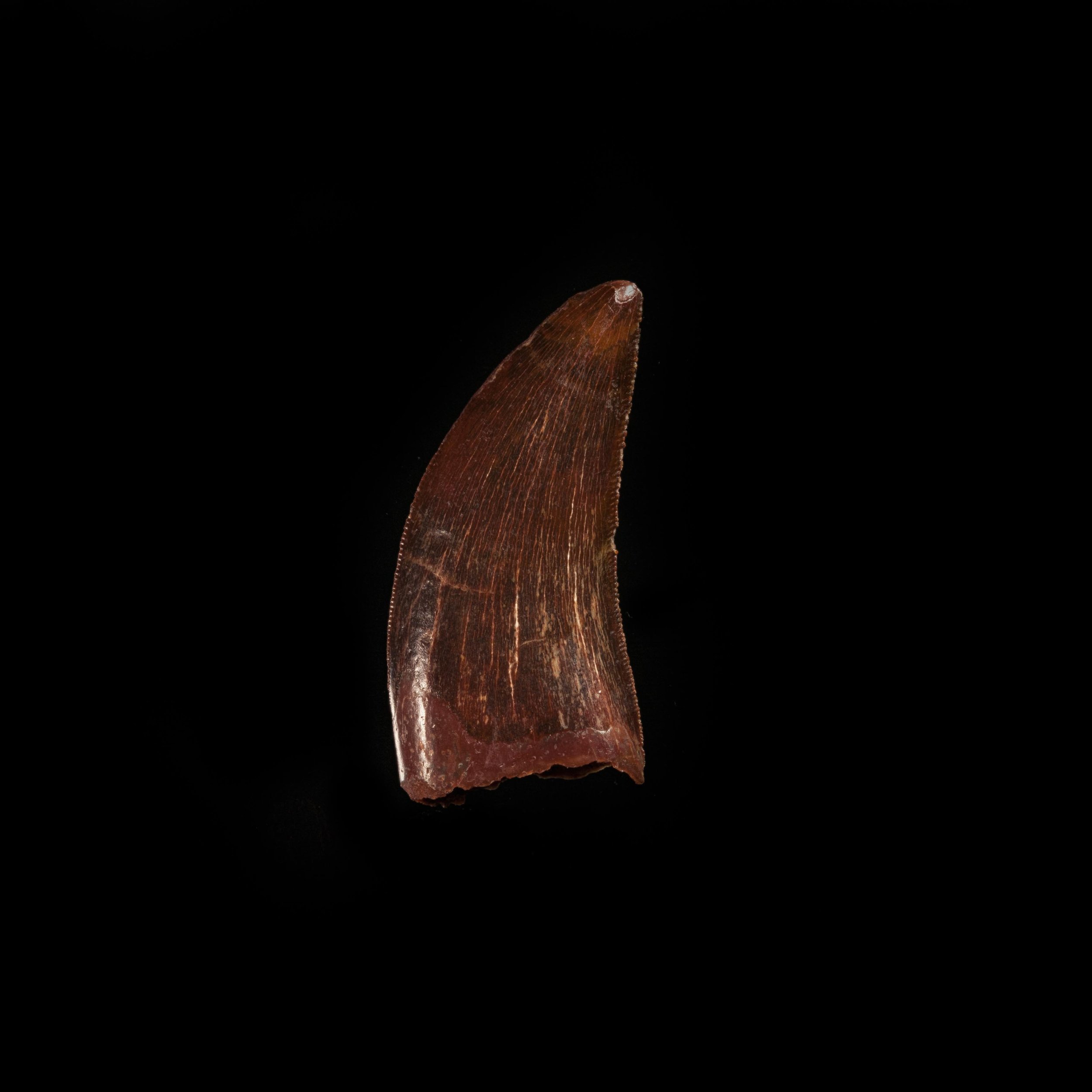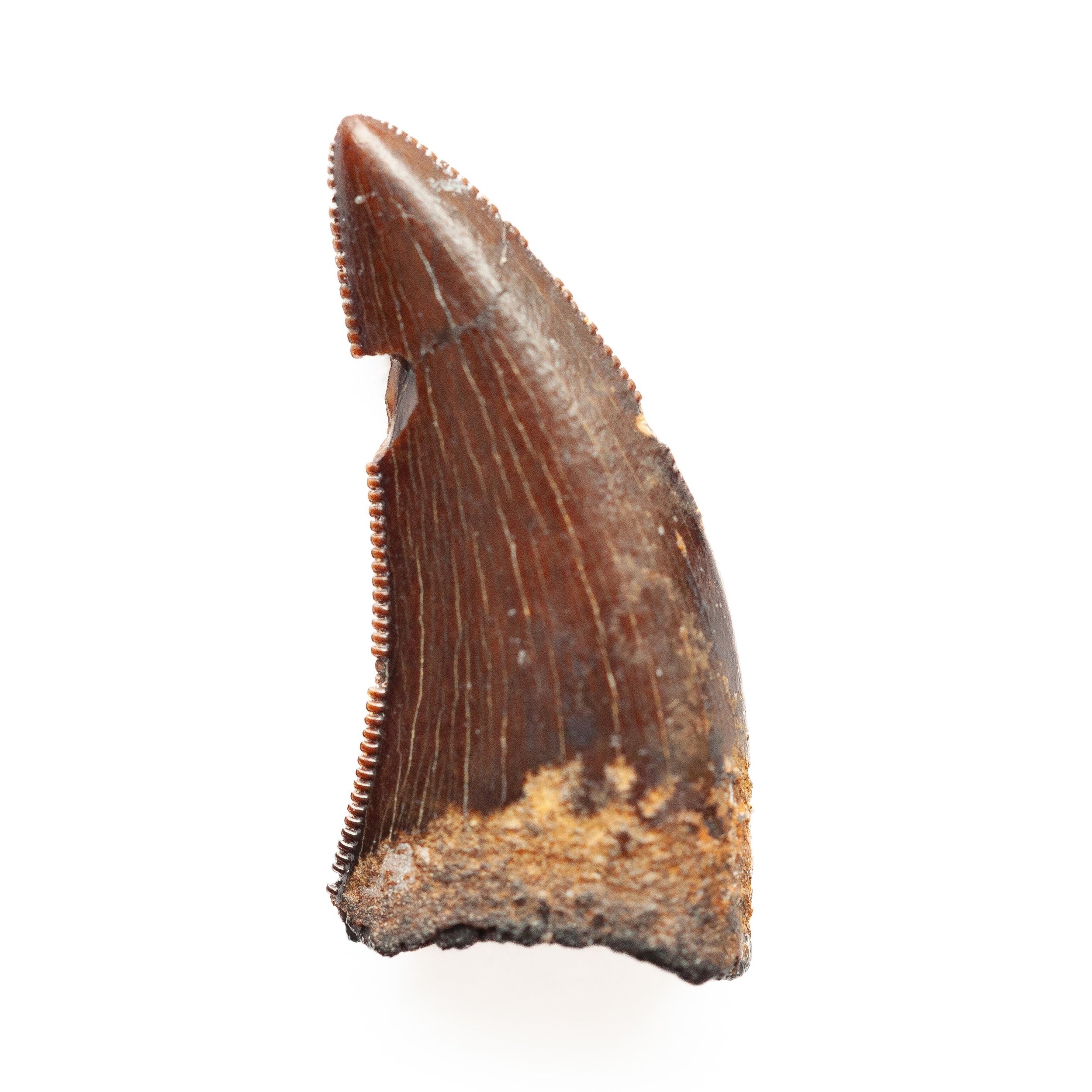 Image 1 of 8
Image 1 of 8

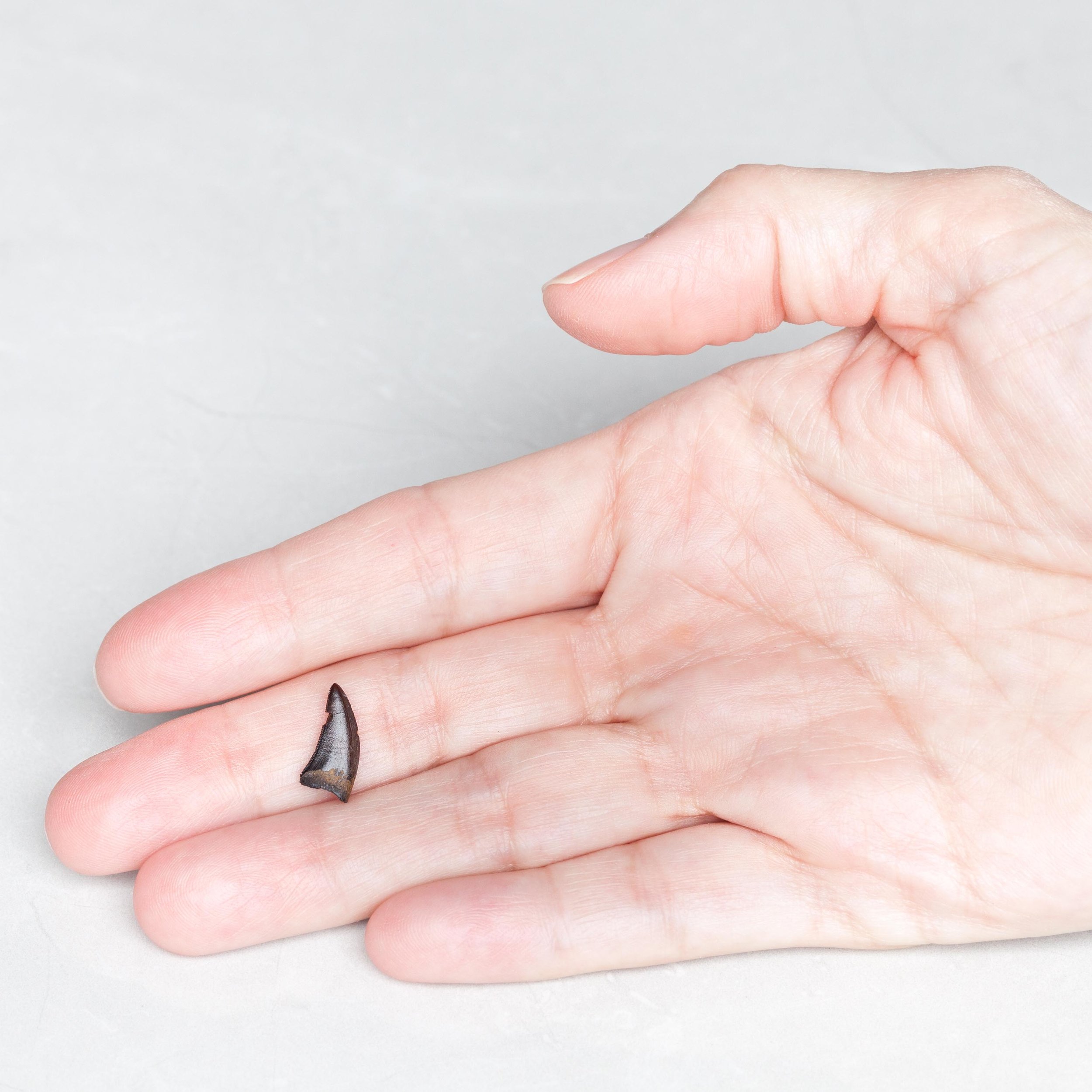 Image 2 of 8
Image 2 of 8

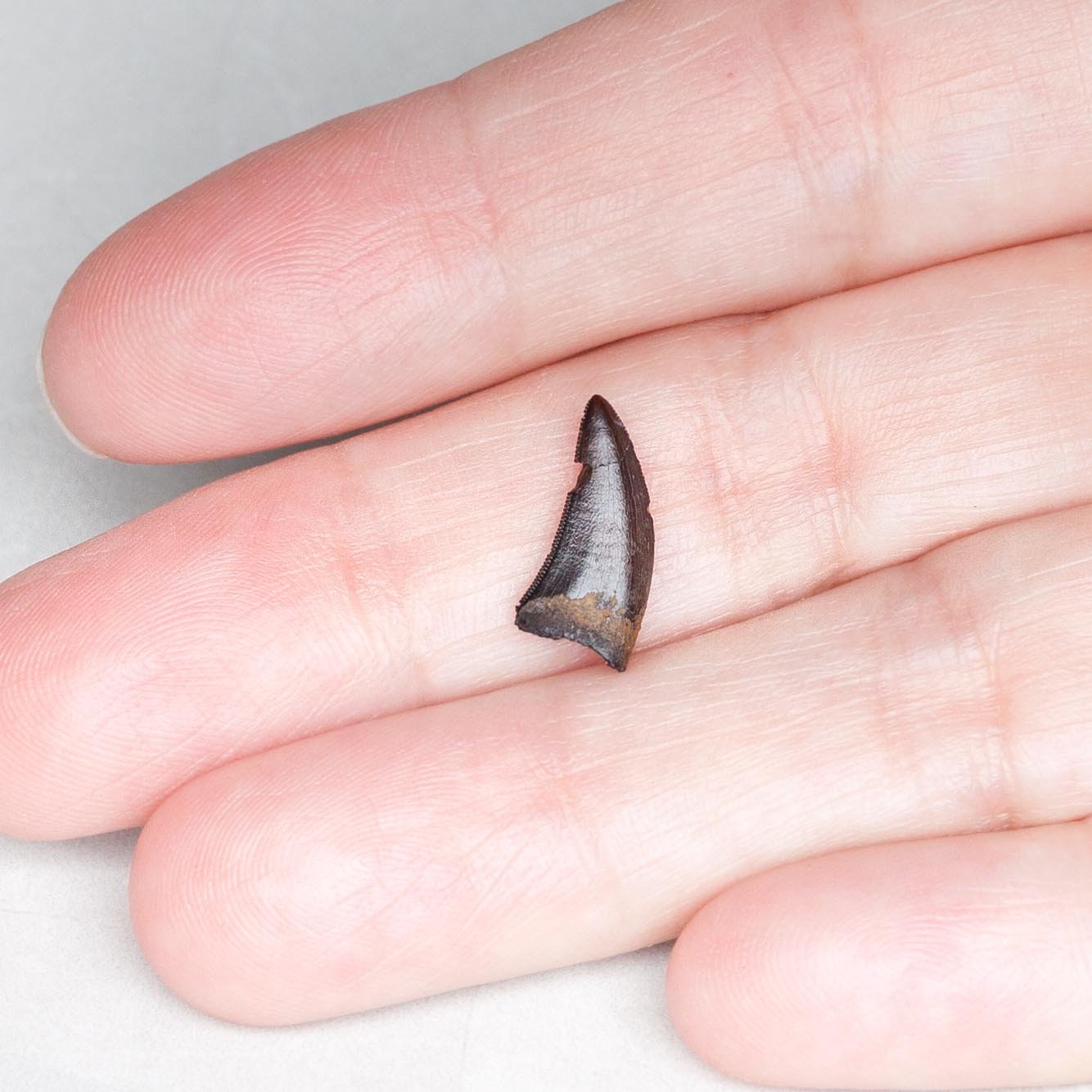 Image 3 of 8
Image 3 of 8

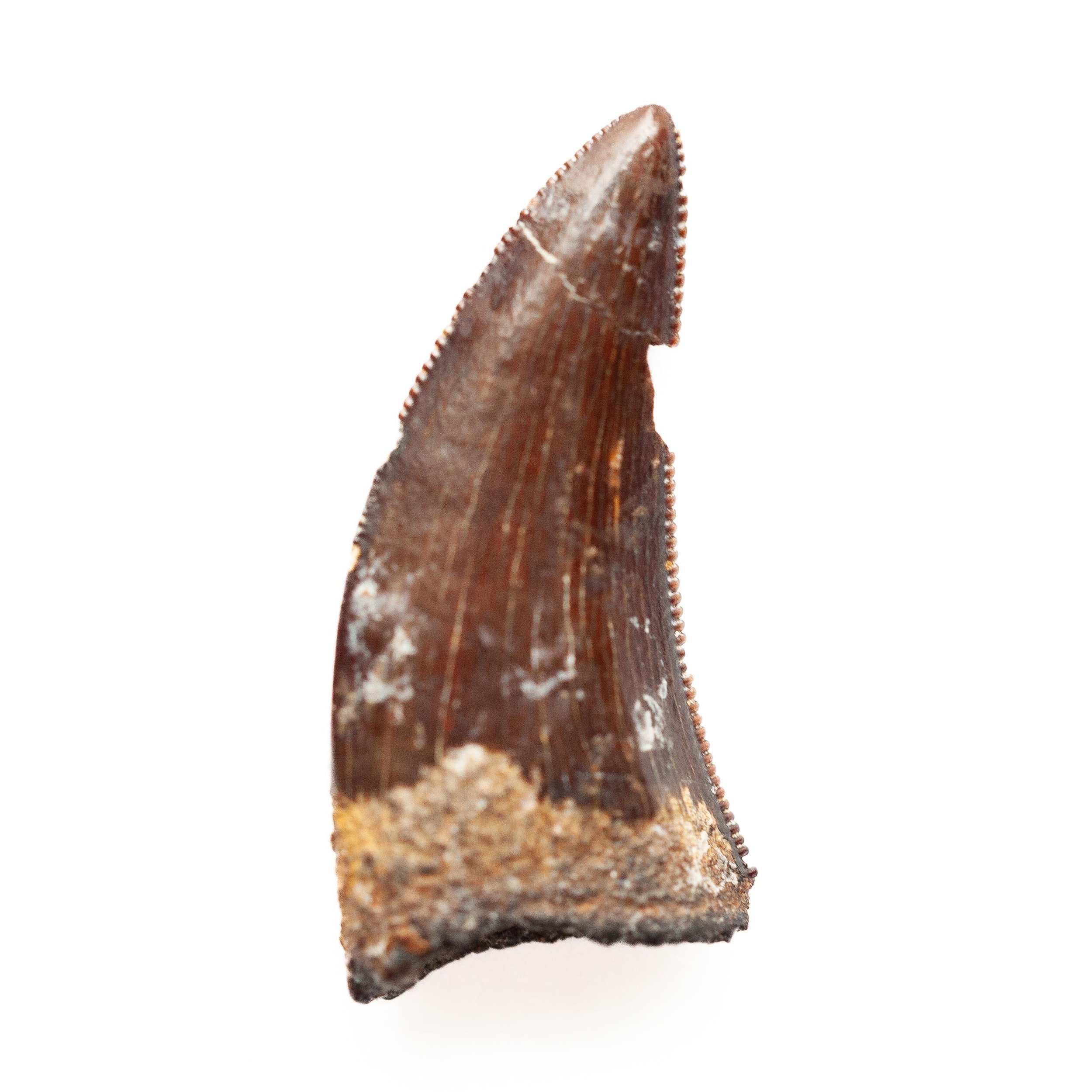 Image 4 of 8
Image 4 of 8

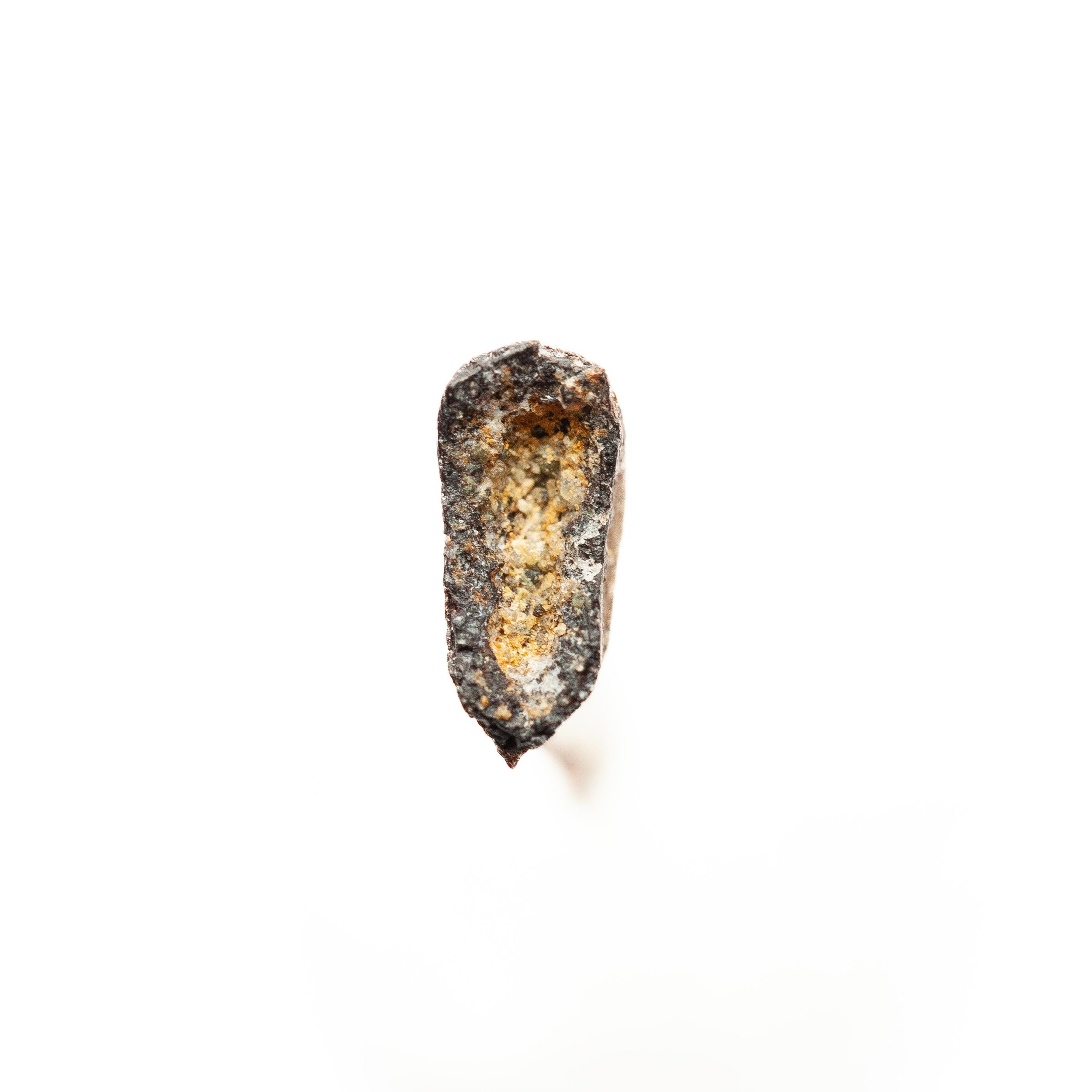 Image 5 of 8
Image 5 of 8

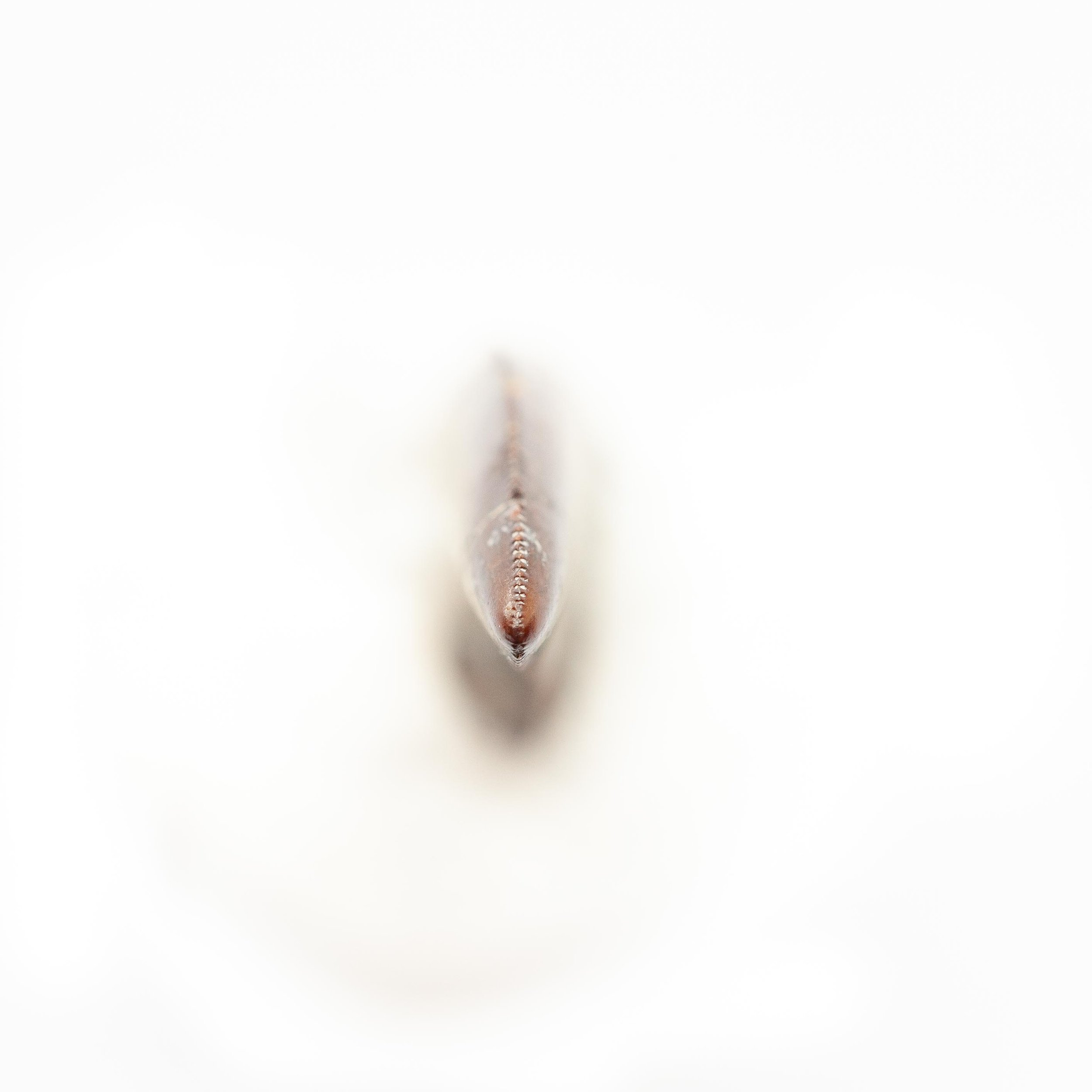 Image 6 of 8
Image 6 of 8

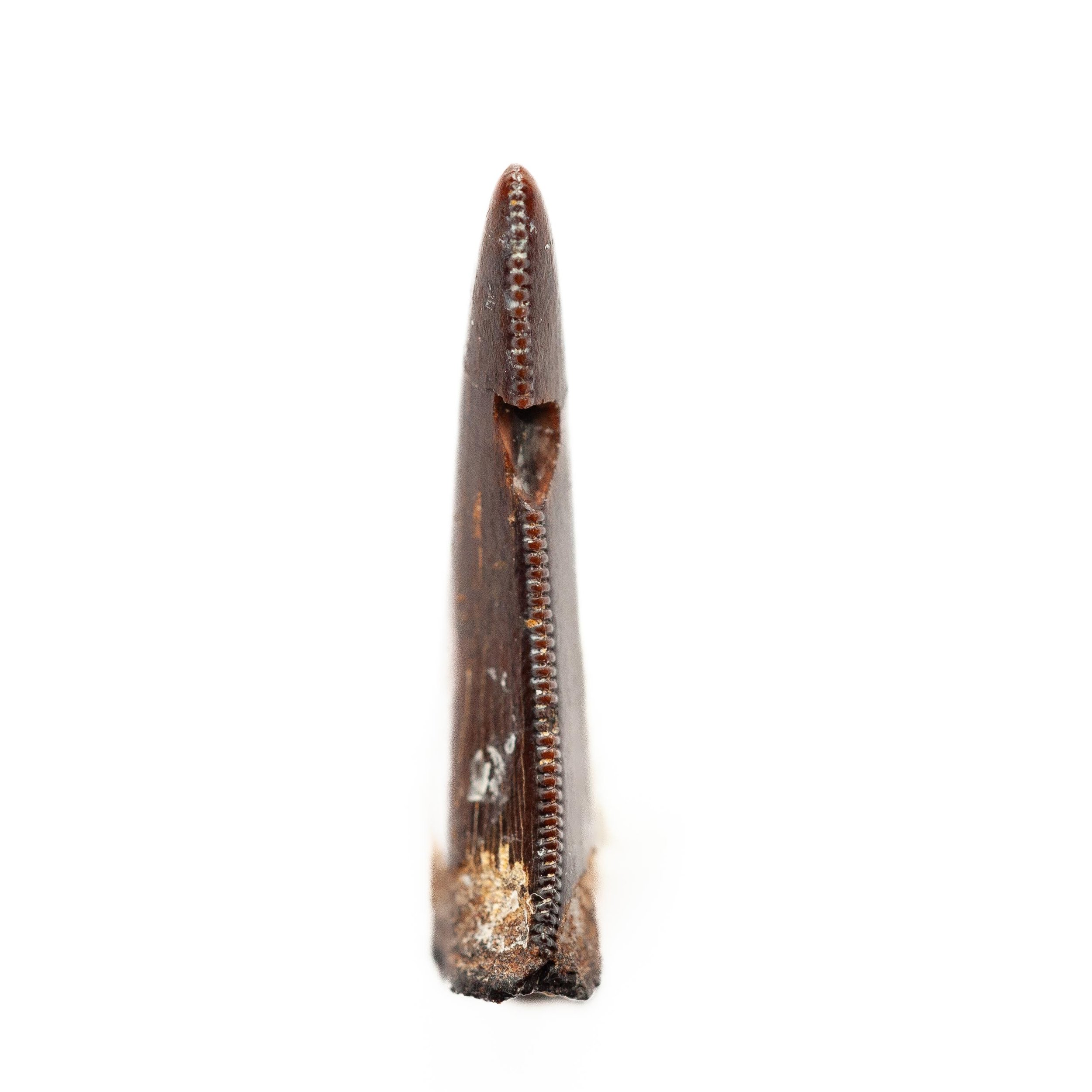 Image 7 of 8
Image 7 of 8

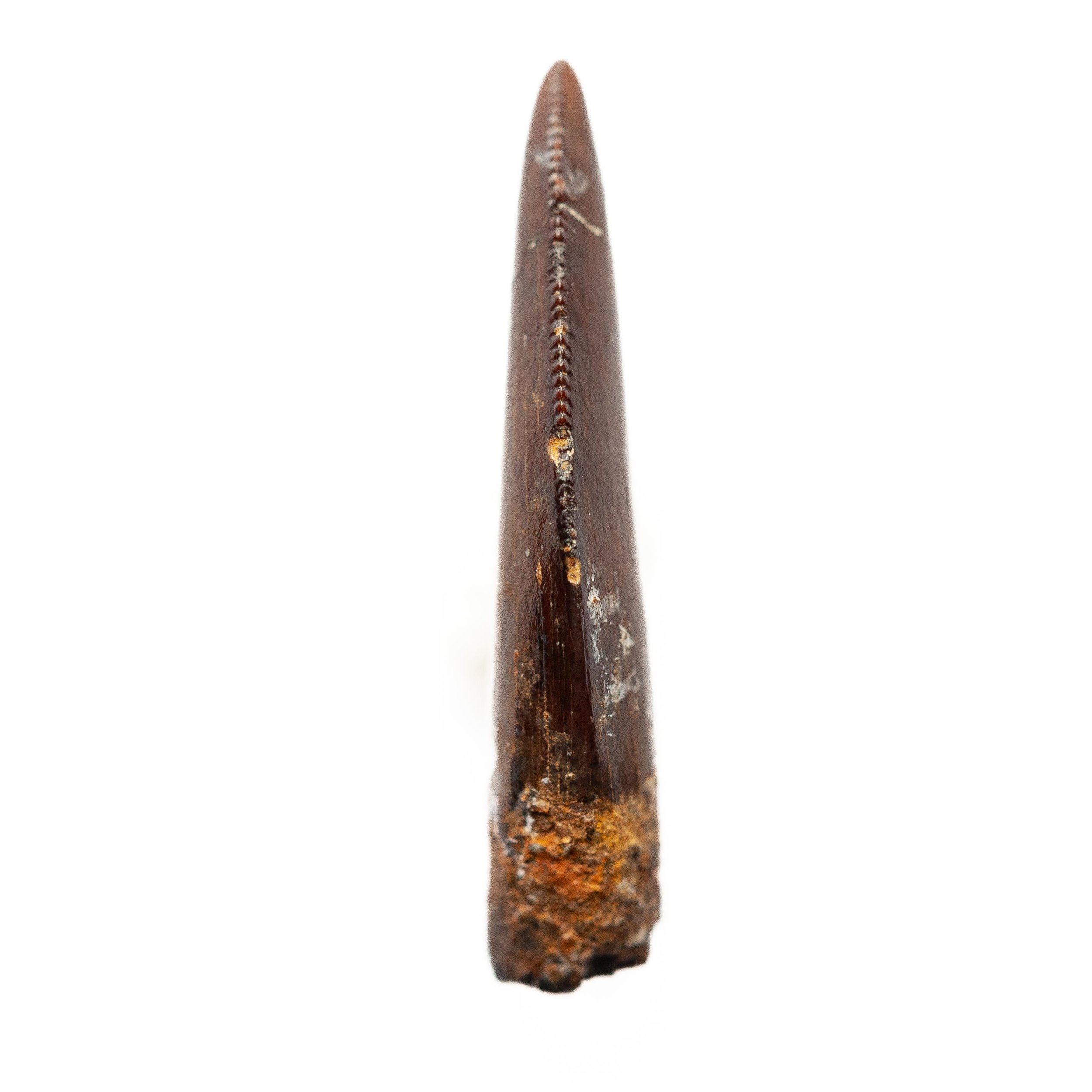 Image 8 of 8
Image 8 of 8









Dakotaraptor steini
Vendor: Fossil Soup
SKU Number: SQ8436585
A seldom seen species, and one of the very last dromaeosaurids, surviving to the very end of the Mesozoic era about 66 million years ago.
Dromaeosaurs are feathered carnivorous theropods, popularly referred to as raptors, that thrived during the Cretaceous period. This tooth comes from the Hell Creek Formation, Harding County, South Dakota, and is a nice example of a lateral maxillary or dentary (upper or lower jaw) tooth with some visible denticles along the distal (backward facing serrated edge) carina.
There is evidence of repair where the tip of the crown has been stabilized to correct a break that may have been occurred due to natural erosion prior to the collection of the tooth. This is not uncommon, where teeth have become naturally fragmented as they become exposed to the elements.
Rather than restore the tooth, it is offered here in its originally recovered state which is reflected in the price. This is still a very desirable tooth for any collector. The surface of the tooth has a high gloss, very dark patina.
It should be noted that it is very difficult to determine tooth position based on the inspection of isolated examples. Therefore we use certain morphological features to suggest general location. A morphological diagram is provided further down the page.
Full dimensions are listed below.
Vendor: Fossil Soup
SKU Number: SQ8436585
A seldom seen species, and one of the very last dromaeosaurids, surviving to the very end of the Mesozoic era about 66 million years ago.
Dromaeosaurs are feathered carnivorous theropods, popularly referred to as raptors, that thrived during the Cretaceous period. This tooth comes from the Hell Creek Formation, Harding County, South Dakota, and is a nice example of a lateral maxillary or dentary (upper or lower jaw) tooth with some visible denticles along the distal (backward facing serrated edge) carina.
There is evidence of repair where the tip of the crown has been stabilized to correct a break that may have been occurred due to natural erosion prior to the collection of the tooth. This is not uncommon, where teeth have become naturally fragmented as they become exposed to the elements.
Rather than restore the tooth, it is offered here in its originally recovered state which is reflected in the price. This is still a very desirable tooth for any collector. The surface of the tooth has a high gloss, very dark patina.
It should be noted that it is very difficult to determine tooth position based on the inspection of isolated examples. Therefore we use certain morphological features to suggest general location. A morphological diagram is provided further down the page.
Full dimensions are listed below.
Vendor: Fossil Soup
SKU Number: SQ8436585
A seldom seen species, and one of the very last dromaeosaurids, surviving to the very end of the Mesozoic era about 66 million years ago.
Dromaeosaurs are feathered carnivorous theropods, popularly referred to as raptors, that thrived during the Cretaceous period. This tooth comes from the Hell Creek Formation, Harding County, South Dakota, and is a nice example of a lateral maxillary or dentary (upper or lower jaw) tooth with some visible denticles along the distal (backward facing serrated edge) carina.
There is evidence of repair where the tip of the crown has been stabilized to correct a break that may have been occurred due to natural erosion prior to the collection of the tooth. This is not uncommon, where teeth have become naturally fragmented as they become exposed to the elements.
Rather than restore the tooth, it is offered here in its originally recovered state which is reflected in the price. This is still a very desirable tooth for any collector. The surface of the tooth has a high gloss, very dark patina.
It should be noted that it is very difficult to determine tooth position based on the inspection of isolated examples. Therefore we use certain morphological features to suggest general location. A morphological diagram is provided further down the page.
Full dimensions are listed below.
Additional Information
Dromaeosaurs were therapod dinosaurs from the Late Cretaceous, around 67 million years ago. These theropods are from the family Dromaeosauridae, otherwise known as the feathered dinosaurs.
In 2005, paleontologist Robert DePalma in Harding County, South Dakota discovered a fluvial bonebed bearing the remains of a variety of dinosaurian and non-dinosaurian remains, which yielded a partial skeleton attributed by DePalma to a large dromaeosaurid. Subsequently, the same site produced additional dromaeosaurid remains. In 2015, the type species Dakotaraptor steini was named and described by Robert A. DePalma, David A. Burnham, Larry Dean Martin, Peter Lars Larson and Robert Thomas Bakker.
The Hell Creek Formation is a series of fresh and brackish-water clays, mudstones, and sandstones deposited during the Maastrichtian and Danian (respectively, the end of the Cretaceous period and the beginning of the Paleogene) by fluvial activity in fluctuating river channels and deltas and very occasional peaty swamp deposits along the low-lying eastern continental margin fronting the late Cretaceous Western Interior Seaway.
References:
Gondwana - The break-up of Pangaea
Dromaeosauridae
Dakotaraptor
Hell Creek formation
